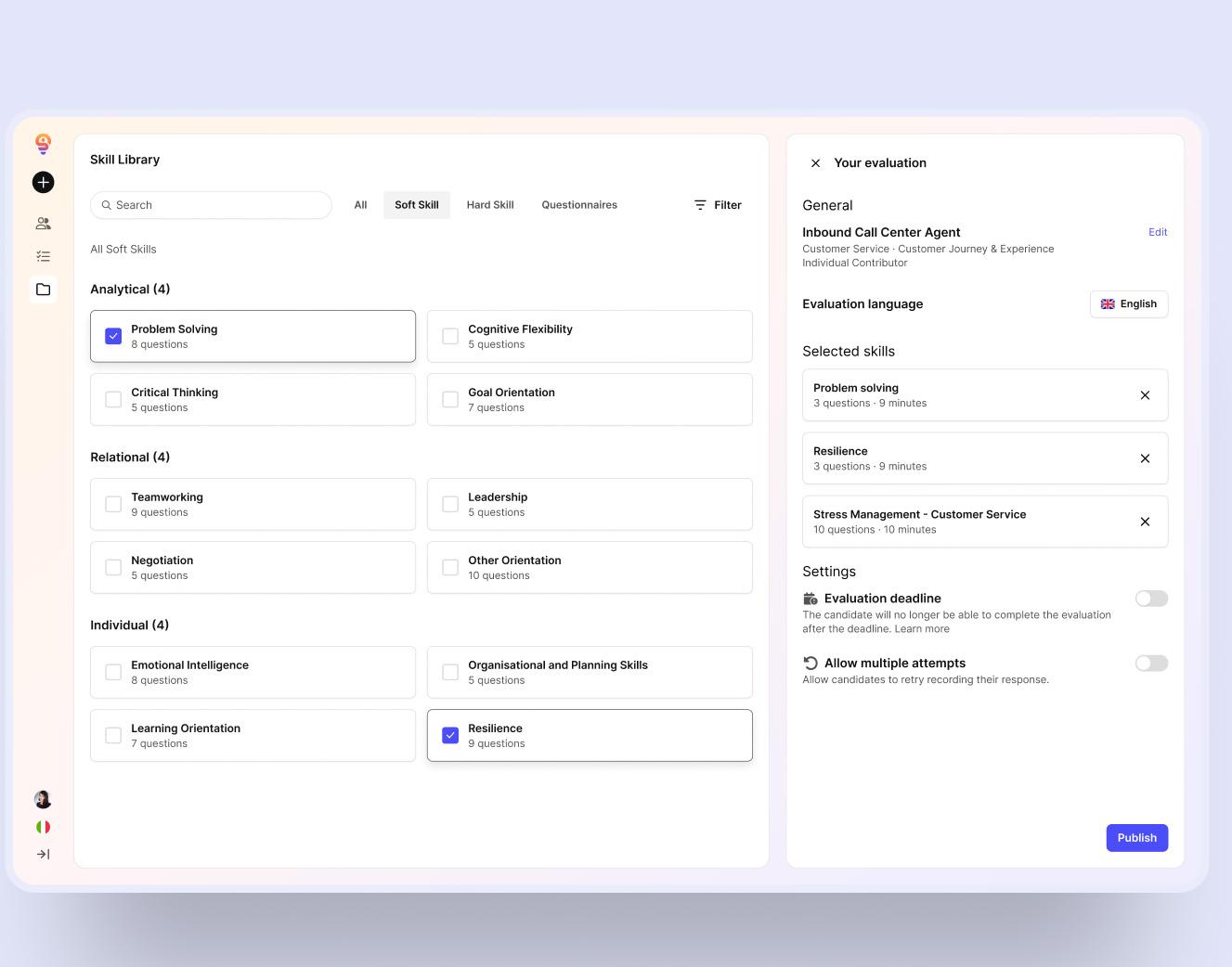Kamil Chudziński, Head of Digital Transformation, on the company’s ambitions to be the most digitalised FMCG business in Poland by 2027.
also in this edition

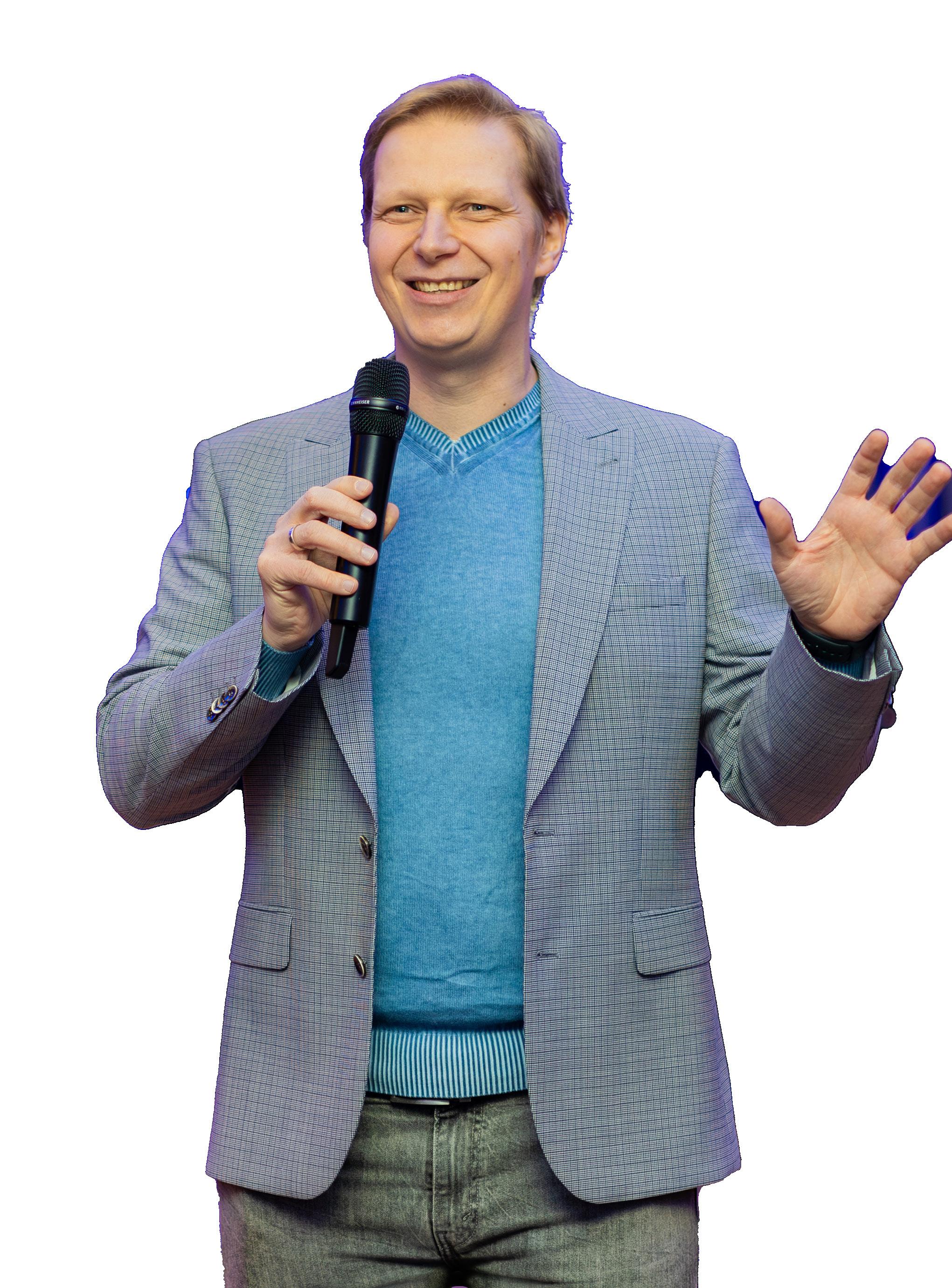
Stay






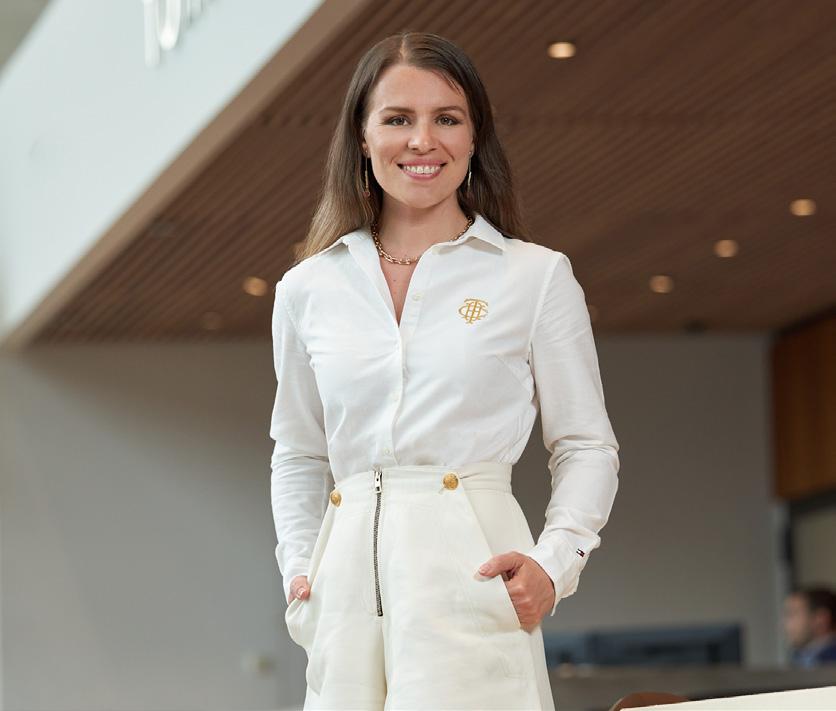
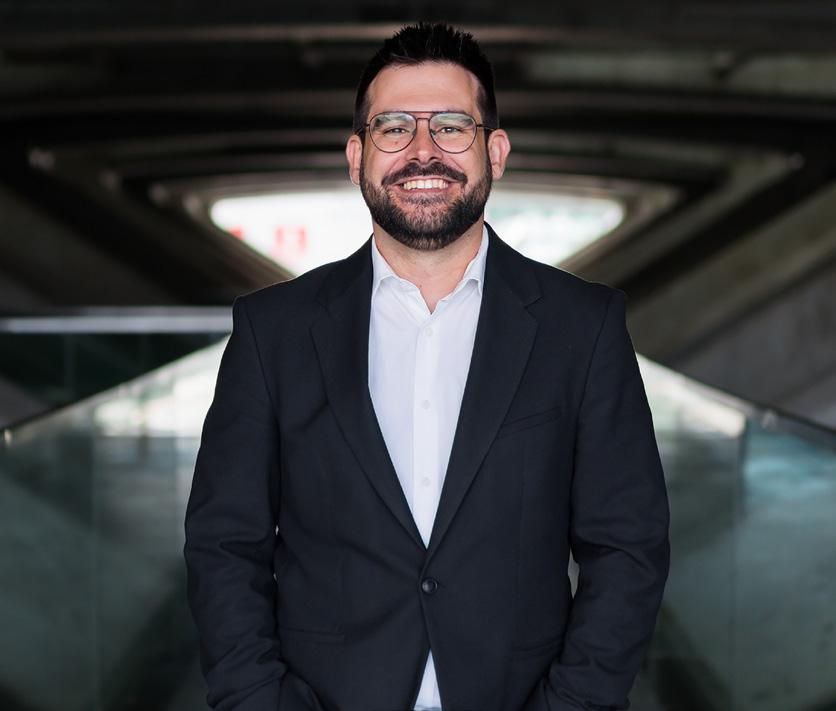
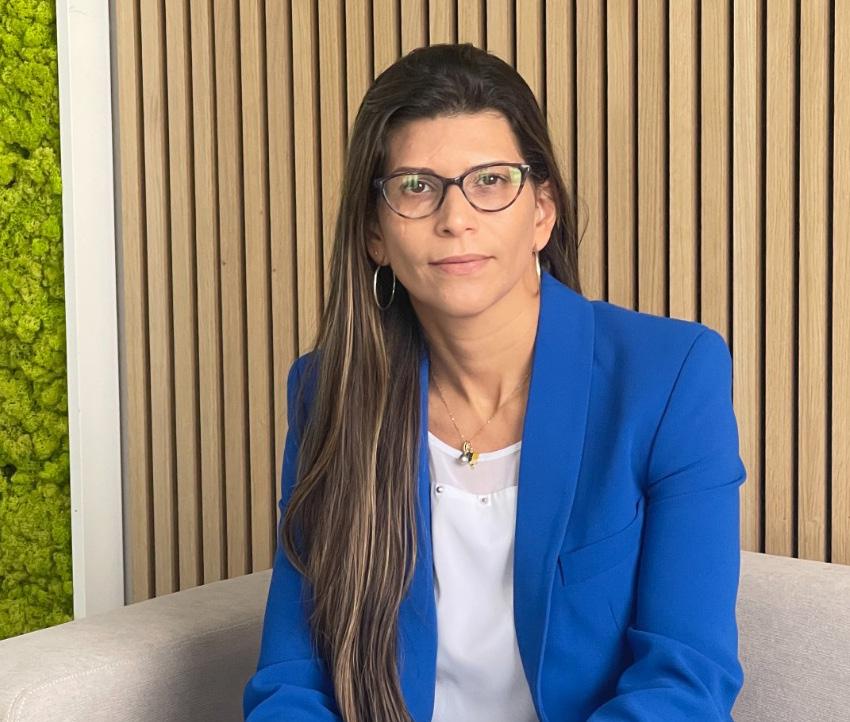
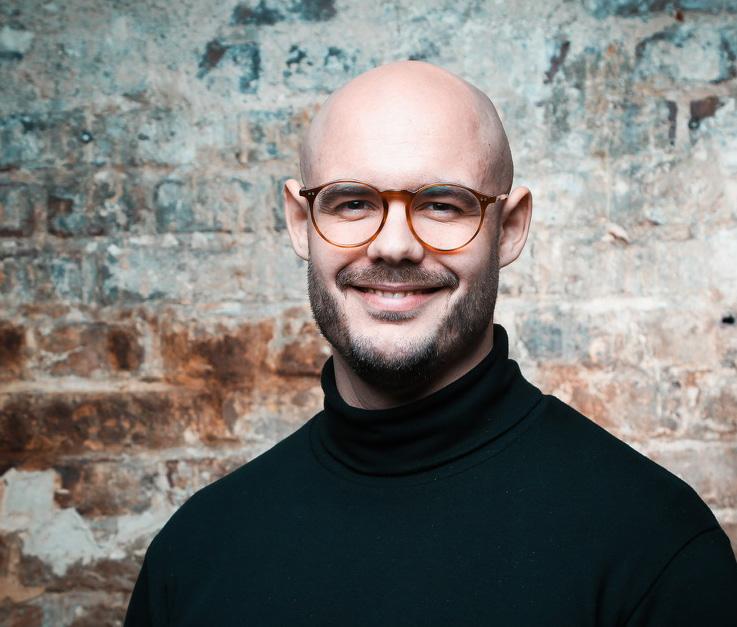



Kamil Chudziński, Head of Digital Transformation, on the company’s ambitions to be the most digitalised FMCG business in Poland by 2027.
also in this edition


Stay












Welcome to the June edition of INNOVATION Magazine!
ummer has well and truly landed here in the UK: the sun is out, flowers are beginning to bloom – and there’s a buzz about our latest issue.


We are delighted to share two exclusive interviews with you this month, alongside the latest global technology news and features.

Innovation Magazine is a specialist technology platform with over 166,700+ readers.
For our cover interview, I have the pleasure of sitting down to chat with Kamil Chudzinski, Head of Digital Transformation at PepsiCo Poland. We explore the company’s recent digital transformation journey, with the ultimate goal of becoming the most digitalised FMCG business in Poland by 2027 (
Our community consists of C, V and D level executives from a wide range of industries. A unique blend of thought leadership interviews and features that cover digital transformation, cloud & cyber, enterprise IT, artificial intelligence, machine learning and sustainability.


Next up, we lift the lid on KFC’s most recent tantalising spin-off: Saucy. Christophe Poirier, Chief New Concept Officer at Yum! Brands joins me to share the vision, technology, innovation and partner ).
Minja Karl, Logistics Excellence & Transformation Director, CEE at Molson Coors, discusses the technology, innovation and sustainability strategies driving the company forward in this diverse and
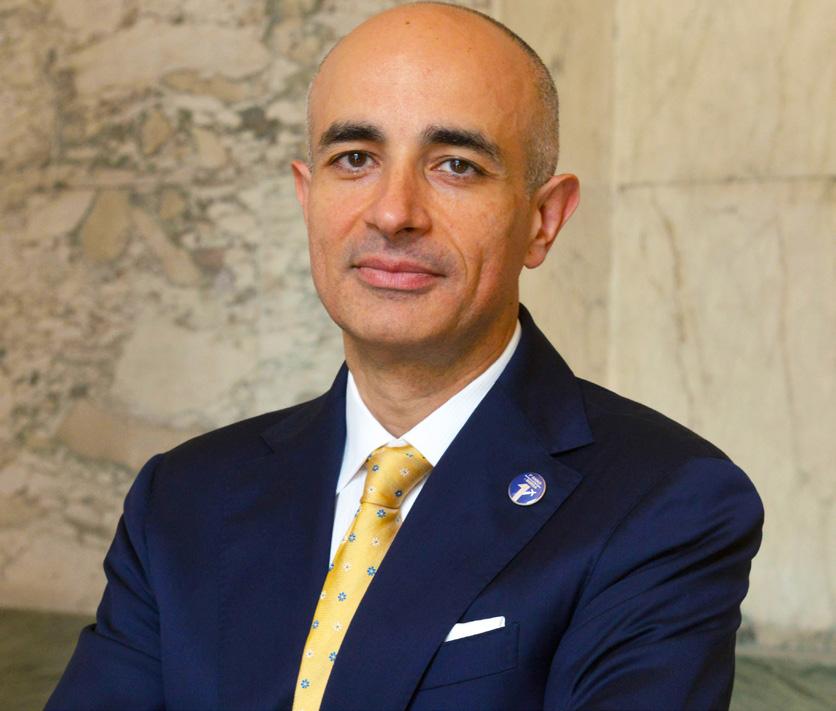
Then, we’re thrilled to present industry insights from Beazley on deploying new technologies and tools for design firms. The leading specialty insurer dives into the considerations at play when weighing up new dynamics in practice and procedure (
In our global tech features this month, we cover the launch of a strategic innovation programme for creative solutions in industrial AI ( ), new research indicating Brits are hoarding defunct tech but would love to have new ways to repair it ( ), the double-edged sword presented by mass drone ), and how brands can close the digital expectations gap with Gen Z (

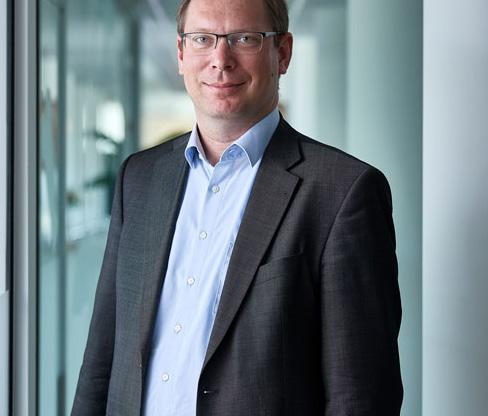

Last but by no means least, our Startup of the Month is Skillvue – the HR tech platform evolving into a p116
We hope you enjoy our latest edition. As always, if you would like to be considered as an interviewee or if you have a story for us, please do get in touch.
editorial@ithink.media



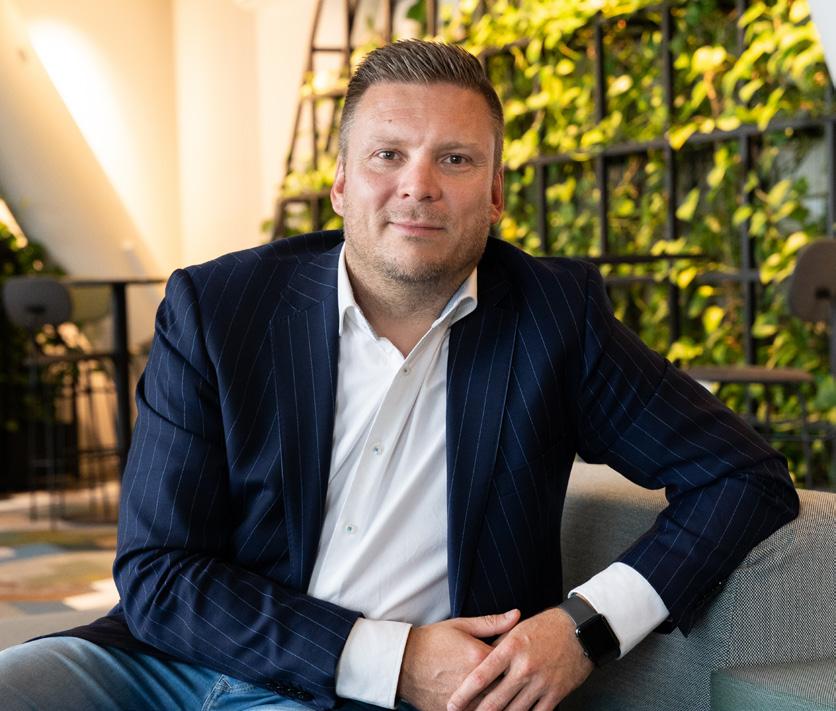
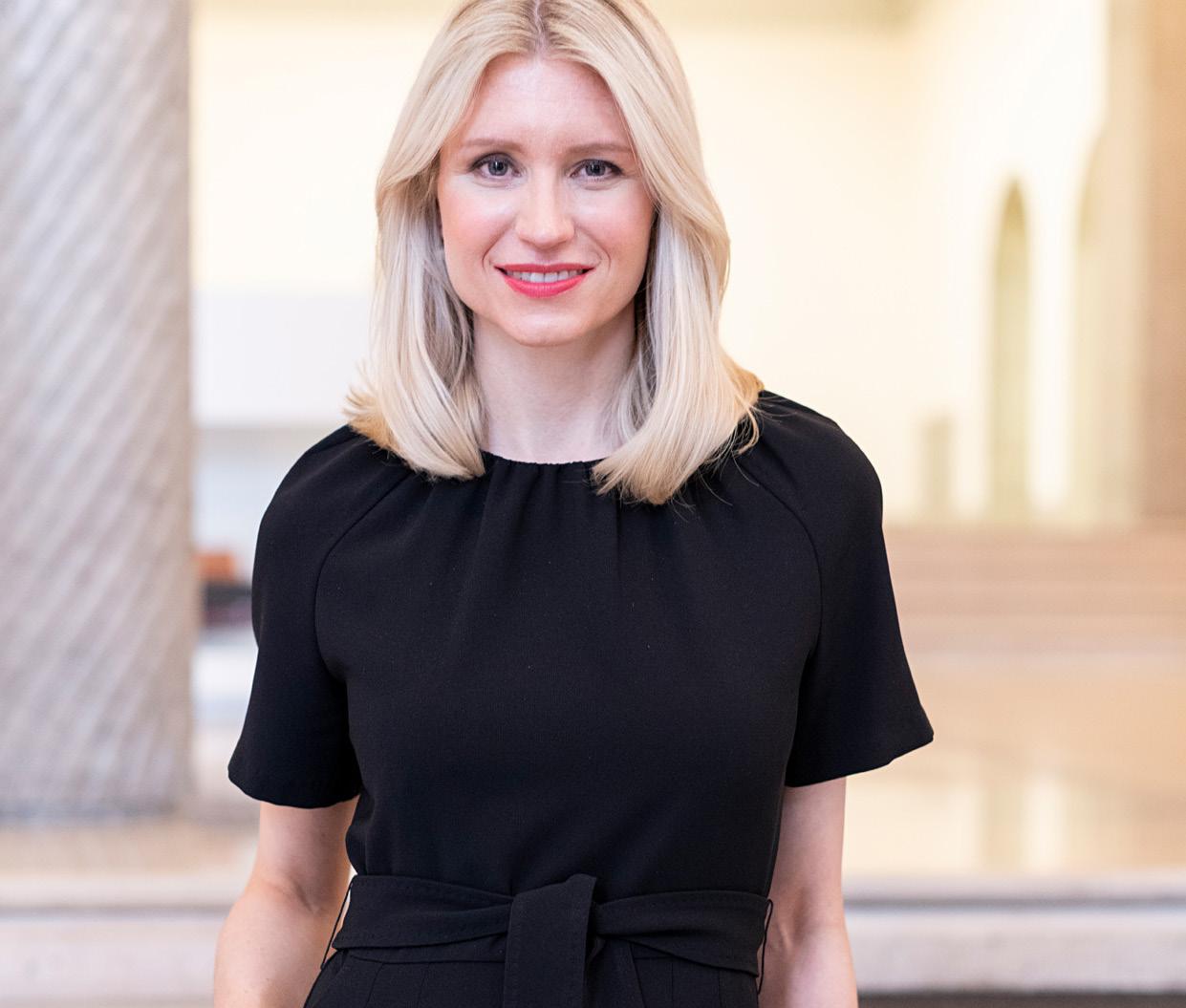
Kamil Chudziński on the remarkable digital transformation underway at PepsiCo Poland

IFS launches Nexus Black co-create solutions leading edge of industrial
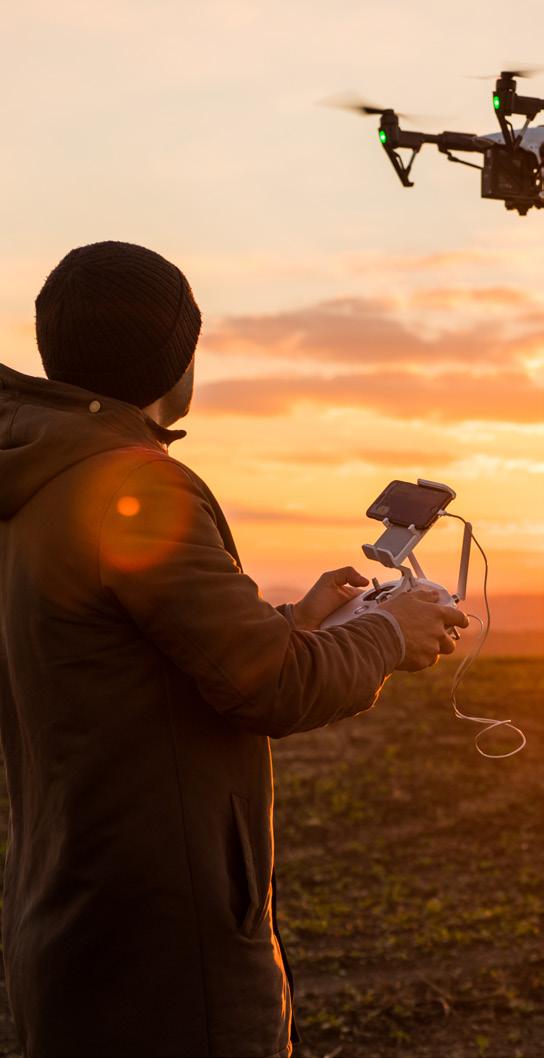
The pros and cons of down on mass drone adoption
78 Balancing risk and reward tech-savvy design firms
Black to at the industrial AI
52
Why are Brits hoarding millions of outdated gadgets?

92
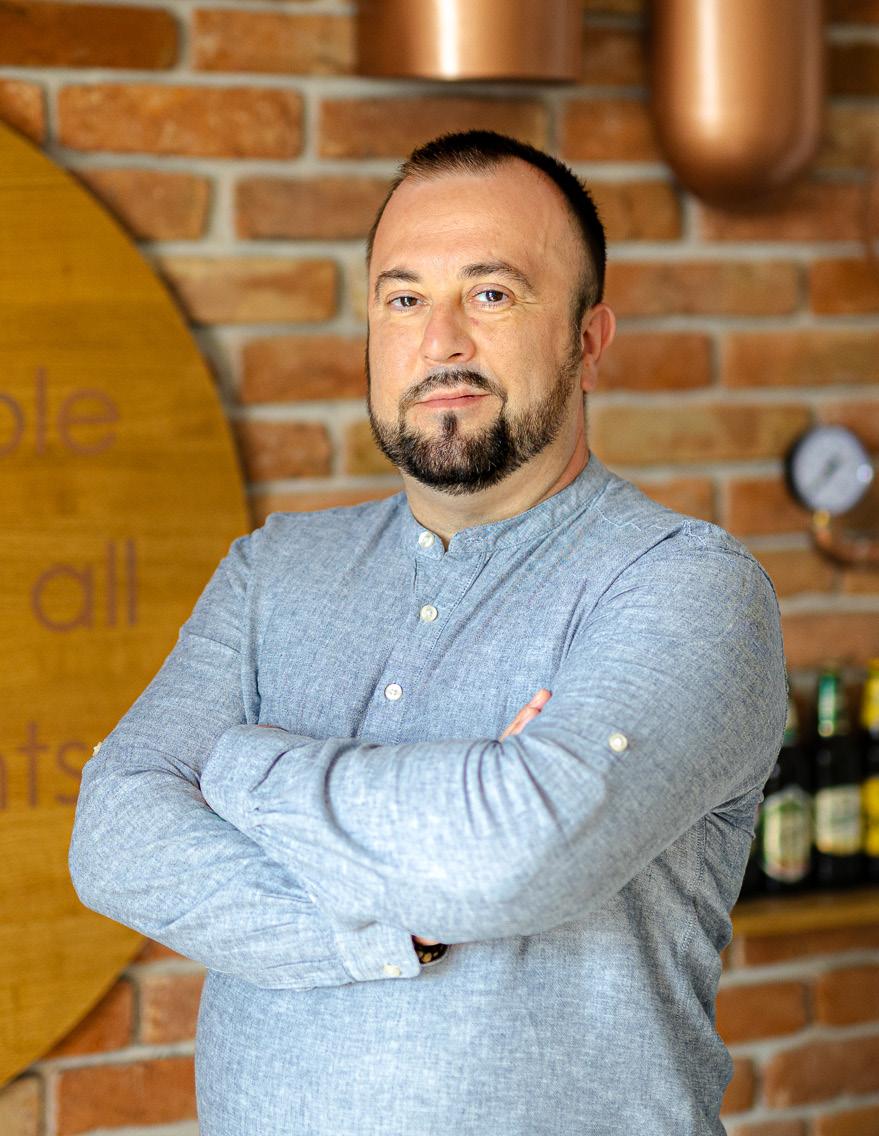

Christophe Poirier discusses delighting diners with a tech-forward experience at Saucy by KFC
34 of doubling drone
64
Minja Karl walks us through the logistics innovation strategy at Molson Coors
116 Meet Skillvue, our Startup of the Month reward for firms

104
Closing the digital expectations gap

Kamil Chudziński, Head of Digital Transformation, on the company’s ambitions to be the most digitalised FMCG business in Poland by 2027.

PepsiCo products are enjoyed by consumers more than one billion times a day in more than 200 countries and territories around the world.
he business generated more than $91bn in net revenue in 2023, driven by a complementary beverage and convenient foods portfolio that includes Lay’s, Doritos, Cheetos, Gatorade, Pepsi-Cola, Mountain Dew, Quaker and SodaStream.
Guiding PepsiCo is their vision to ‘Be the Global Leader in Beverages and Convenient Foods by Winning’ with pep+ (PepsiCo Positive). Pep+ is the company’s strategic endto-end transformation that puts sustainability and human capital at the centre of how it will create value and growth by operating within planetary boundaries and inspiring positive change for planet and people.
Here to elaborate on this profound digitalisation journey is Kamil Chudziński, Head of Digital Transformation at PepsiCo Poland.
“I joined the company in February 2023, when PepsiCo Poland had a clear vision for putting digital strategy at the forefront of its transformation journey,” says Kamil. “This was a moment when PepsiCo Poland had just finished implementing the new version of SAP. During this three-year process, the evolution of our systems had to take a back seat. Then, in 2023 when this project completed, we entered a diagnosis phase. We considered where we were, what our priority areas to tackle would be and how we could realise our ambitions.




“PepsiCo is very much dedicated towards the environment and making our operations as ecofriendly as possible”
Kamil Chudziński, Head of Digital Transformation at PepsiCo Poland
“Towards the end of 2023, we had a crystallised strategy on the key dimensions of our digital transformation. What is absolutely crucial to understand here is we made it an essential part of our general company transformation journey. This helped us to get support from the entire Leadership Team. Continuing on our digitalisation path, today we have four building blocks of our digitalisation strategies, which we put as an absolute priority. Each one has multiple elements to it.
“The first component of our digital strategies is cashless. Here at PepsiCo in Poland, we work directly with around 65,000 retailers in the Hotel, Restaurant, and Café/ Catering (HoReCa) industry alongside traditional trade avenues. So we have a huge base of customers that we work with. Before we started to

engage our cashless mission, we had over 30% of our revenue generated in these two channels from cash.
“The problem with cash is twofold. First of all, it’s very expensive, because for us to pay our suppliers or for us to pay our employees, we need to digitise this money – which is a costly obligation.
“Second, and even more importantly, cash reconciliation is a big timeconsuming element. Every time our sales representatives or drivers collected cash, they needed to spend

approximately 25 minutes to do the cash reconciliation properly. It didn’t matter if the transaction was $1,000 or $1. The smallest amount still takes the same amount of time to complete the transaction.
“So this became a clear priority for us to work towards withdrawing cash transactions from our operating model as soon as possible.
“The progress we have made today is great, we already reduced cash by over 60%. In April 2025, we had slightly above 12% of revenue generated
from cash. And this is still before the most significant digitalisation project yet to come. The mobile payment solution we are about to launch will be the first solution in Poland with fully flexible payment capabilities for our drivers and sales representatives.
“The second building block in our digitalisation journey was setting ourselves up to become paperless. The paperless programme is a part of a wider agenda for the company. PepsiCo is very much dedicated

towards the environment and making our operations as eco-friendly as possible.
“We conduct 6,5000 deliveries every day, so we generate a massive amount of paper. Here in Poland, we have legislation coming in February 2026 –the KSeF E-Invoicing Mandate, which means every invoice from PepsiCo to our business partners will be done through the government digital platform.
“As such we had two motivators to become paperless in our operations. First, there was the pending legislation from the Polish government. Second, PepsiCo’s own ambitious sustainability agenda, which means we want to go deeper and eliminate paper entirely from our operations.
“So far, we have reduced our paper consumption, equivalent to around 870 trees. This is a key area where we are trying to have an impact on the environment.
“However once our solution is well grounded, we will do our best to encourage other peer companies to join us. It is mind-blowing that in the FMCG industry, we waste from 15,000 to 20,000 trees every year just to cover paper for deliveries realisation. We aim to grasp as much value from this situation as possible by encouraging and supporting other businesses to join our initiative.
“The third dynamic of our digital strategy is something we call the customer digital workspace. This is an
idea and a strategy where we want to have one platform for all our business partners.
“We are starting with the retailers in HoReCa and traditional trade. We are building them a platform which will help us to holistically make doing business with us easier. The customer digital workspace is effectively a collaboration hub with four elements to it.
“First, we have designed the platform to be the most convenient way to place an order. Second, it is a comprehensive customer service hub. Third, it serves as a finance management portal. Lastly, it is a centralised information resource.
“We went live with the customer digital workspace in November 2024. It has been tremendously successful
and it is fundamentally important to PepsiCo Poland because it integrates, encompasses and represents all components of our broader digital strategies.
“Our launch of this global platform is the best so far. Already over 60% of all orders in HoReCa channel are generated through the PepHub platform.
“The fourth and final building block of our digital strategy is self-service and field automation. Here, what we are towards is the concept that whatever a retailer can do themselves, it is usually more convenient for them to do it that way. We want retailers to be able to complete every operation they might need to do independently, making self-service as smoothly as possible.

“Our launch of this global platform is the best so far. Already over 60% of all orders in HoReCa channel are generated through the PepHub platform”
Kamil Chudziński, Head of Digital Transformation at PepsiCo Poland
“In terms of field automation, we are working to help our field force work even more efficiently and effectively. We began on this dynamic back in 2023 during the diagnosis and design phase of our digital transformation journey. By the end of that year, when we launched the initiation phase, we knew 2024 would entail work on our digital landscape. The first big project was our customer collaboration platform called PepHub – launched in November 2024.
“When I joined PepsiCo Poland two years ago, I was very impressed by how ambitious the company is in terms of our digital transformation, growth, customer collaboration and vision. The overarching goal is to be the most digitalised company in the fast-moving consumer goods industry (FMCG) in Poland by 2027 – and I believe our road map will help us realise this ambition.”
However, to fully understand the digital transformation journey at PepsiCo
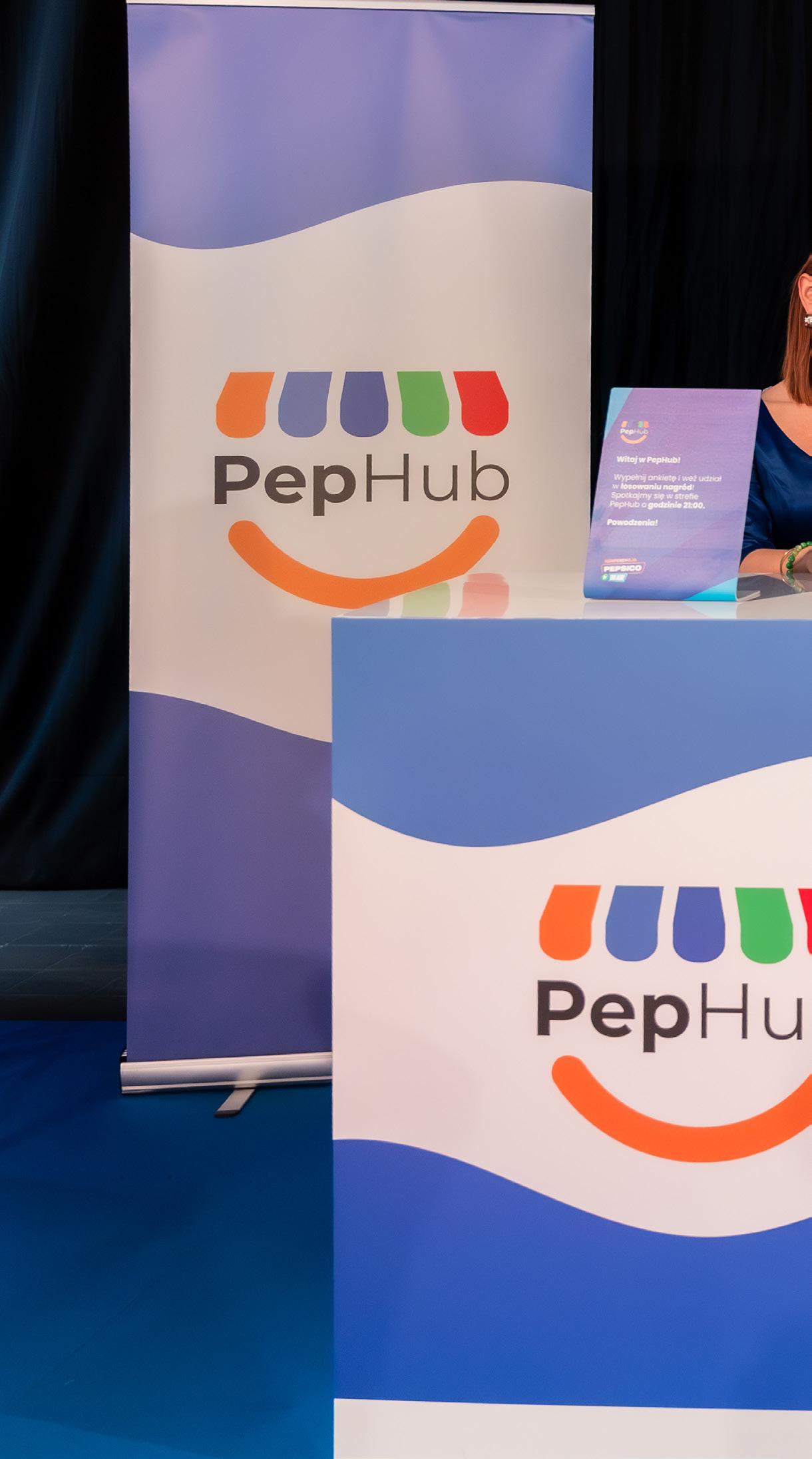
Poland, it must be contextualised alongside one of the company’s core priorities – operational excellence. Kamil divides this down into three components: holistic change management, test & learn, and a balanced approach to innovation.
“We have to ensure that our programmes and operations not only work, but drive a positive impact on our revenues,” says Kamil. “Therefore, we approach operational excellence not
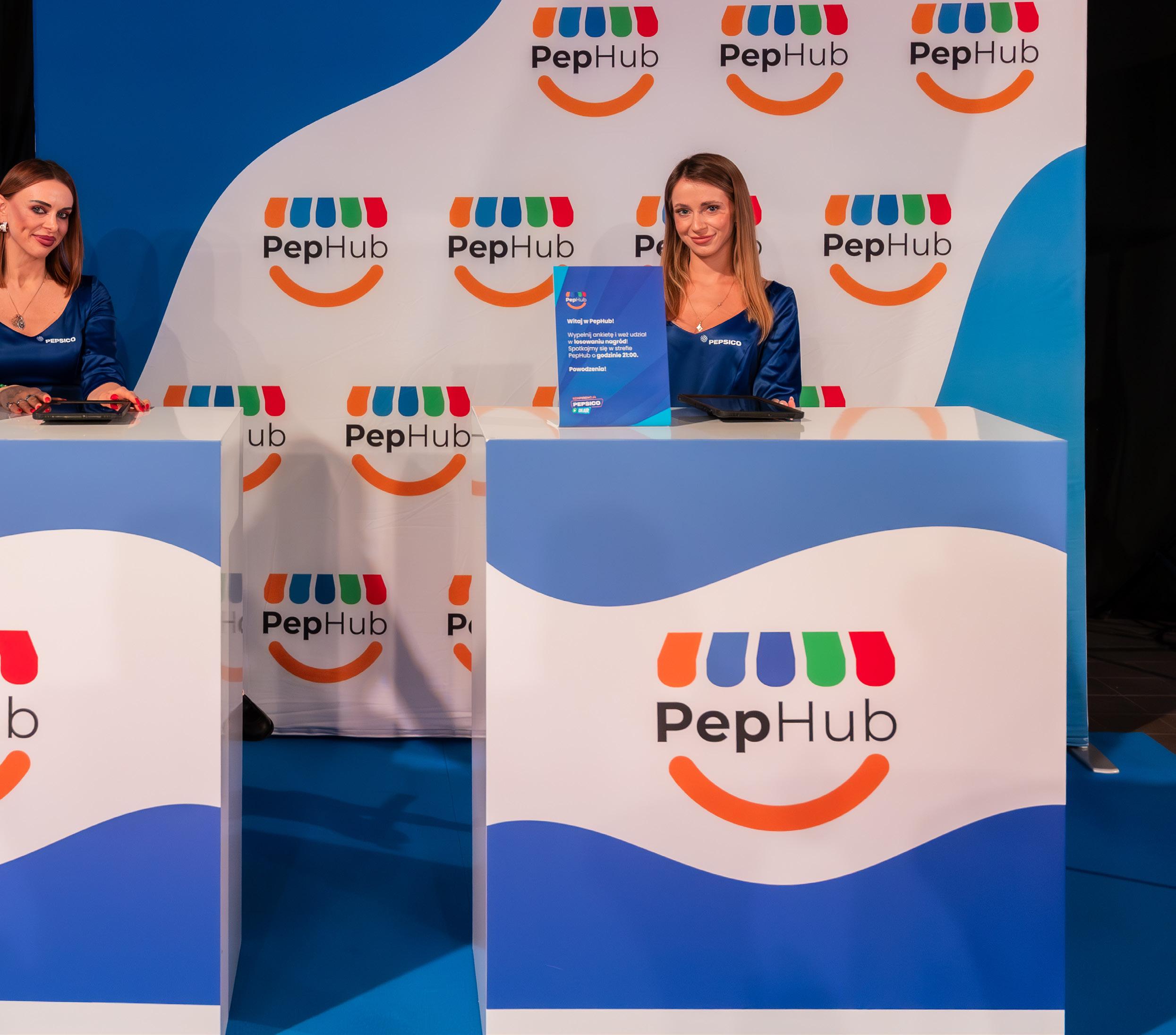
only from a technology perspective, but in a much more comprehensive way.
“As part of this, we have developed a holistic approach to change management involving people, processes and technology. In terms of people within the scope of operational excellence, we ensure that everyone knows what they should do. With processes, we redesign them comprehensively – moving beyond the mindset of plug and
play. For technology, we approach it as a unifying enabler for people and processes, driving operational excellence.”
Beyond this holistic approach to change management, Kamil emphasises that testing and learning are crucial to operational excellence at PepsiCo Poland.
“Whatever idea we have, we will test it before launching it,” says Kamil.

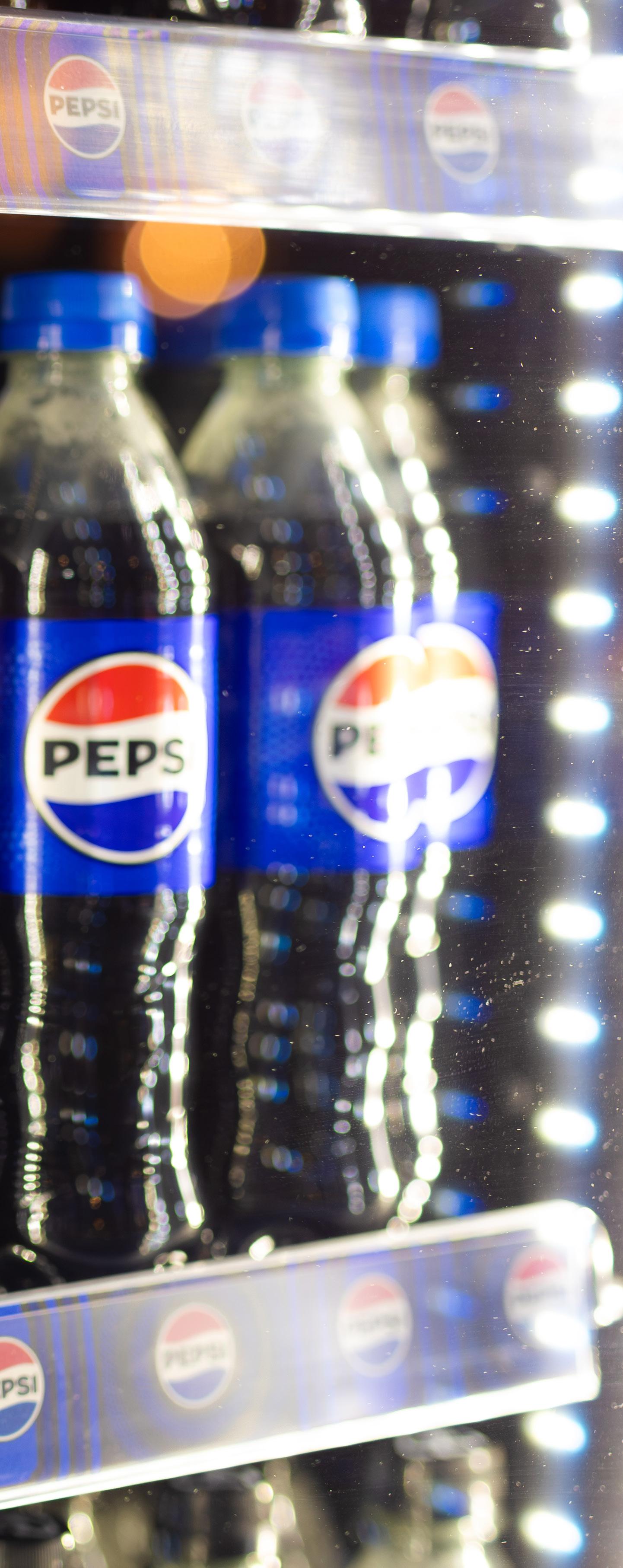
“Testing is not in our DNA as a company, however in Poland with our digital transformation team, we are building this openness to test and learn, with failing being a big part of this. For instance, when we created our Innovation Division, we took 5% of the entire field sales team in Poland and redesigned their mission. The Innovation Division is designed to be accountable for testing our ideas, programmes and operational efficiency projects – before we launch them nationwide.
“Our Innovation Division is absolutely key to driving our transformation. All programmes which are now in the preparation or execution phase were first tested in the Innovation Division. Some of them had a very rough start. For example, our paperless operations initiative was, in the first month, negatively impacting our revenue by almost 8%. We had to learn how to adapt. It took us three months to correct all mistakes and make sure we are ready to launch it nationwide. We did this on May 12, 2025 with no negative impact on the revenue.”
Lastly, Kamil describes the balance needed when deploying innovation in the realm of operational excellence. And here, agility is fundamental.
“Agility defines innovation as an enabler of operational excellence
“One of the great examples here is our partnership with Asseco Platform, part of the Asseco Group. Access to data is an area of increasing importance for PepsiCo Poland”
Kamil Chudziński, Head of Digital Transformation at PepsiCo Poland
here at PepsiCo Poland,” says Kamil.
“We want to move quickly, testing our ideas and concepts with the lowest possible cost and efficient turnaround times, and the Innovation Division is crucial to this end.
“For instance, consider merchandising our products. We had an idea for how to do this digitally using just WhatsApp. The cost of the test

was zero, it took a week to set up, and within a month, we had clear insights as to whether the project had potential.
“Instead of wasting weeks and months to set up experiments, we embrace creativity and agility – drawing our inspiration from startup management thinking, driven by testing, feedback and pivoting. We quickly gauge if our operational excellence projects work, and if they do, whether they are scalable.”
But how has PepsiCo Poland maintained the momentum behind its digital transformation journey? According to Kamil, continued success depends on deploying strategic approaches that not only secure toplevel approval, but grassroots buy-in.
“Based on my experience, not only in PepsiCo, but also previously, I think there are two elements which can break on or make digital transformation work,” shares Kamil. “First is the engagement from the
Leadership Team of the organisation. Fortunately, here in Poland, we have a General Manager who fully believes in the digital transformation and supports it, and this positivity manifests with all our senior leaders. This upbeat attitude towards digital transformation helps us to make it a priority which is thoroughly understood and accepted by the entire leadership team.
“But there is a crucial second element as well: our digital transformation’s success hinges on creating a programme designed to benefit the people who will ultimately be impacted by it.
“If a digital transformation project is underway for the sales team, the field force, or any other department, they must be intrinsically involved in the process and buy into it as well. We must talk to these colleagues, bring them into the journey early at the diagnosis phase, and consult with them along the way.
“Thanks to the Innovation Division, which reports directly to me, we have a group of people who serve as a point of contact and can immediately relay to us broader company feedback about what they need and how certain things could be improved.
“This vertical support from the very top of the organisation to the teams working under them has been imperative to the success of our digital transformation journey.”
As PepsiCo continues on its journey of digitalisation, Kamil stresses the importance of partnerships and collaboration in propelling the company forward and driving business goals.
“As a company, we are currently looking to develop our existing foundation of global partnerships,” says Kamil. “We are looking at these collaborations from the perspective of efficiencies and scalability, and we already work with some of the best systems such as SAP and Salesforce.
“But as the Polish arm of PepsiCo, we are also looking to reconcile some of the gaps between these large global platforms and our location-specific needs.
“Fortunately, I’m pleased to say, PepsiCo is allowing us to enhance our journey with specific partners to assist us here.
“One of the great examples here is our partnership with Asseco Platform, part of the Asseco Group. Access to data is an area of increasing importance for PepsiCo Poland.
“The FMCG market is full of data. Retailers, wholesalers and customers all offer a vast pool of valuable data –but without access to it, companies in the industry are at a disadvantage.
“We have the category expertise but these entities hold the data – if we can combine the two, I strongly

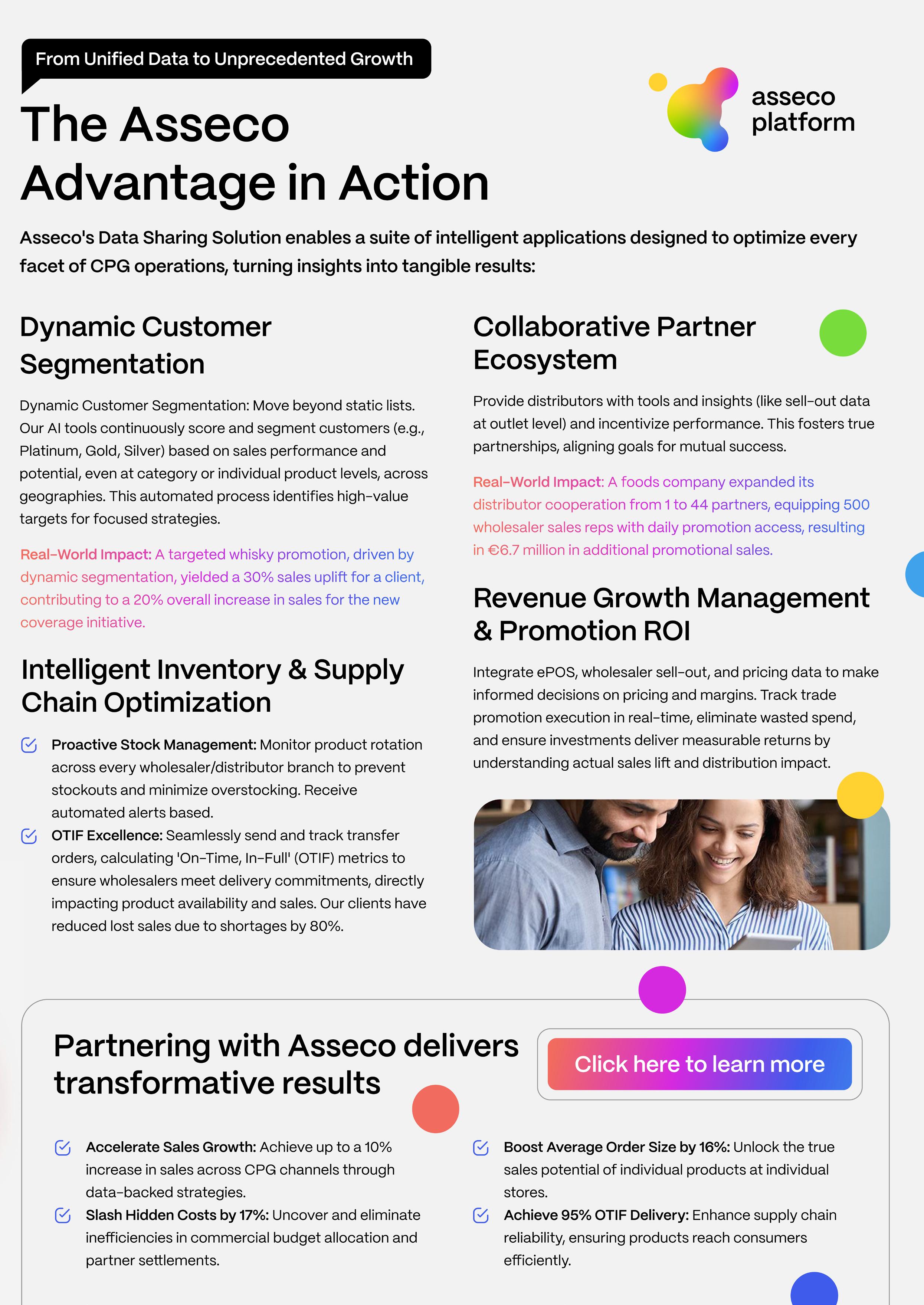
believe the opportunity for growth is exponential, for both us and our clients.
“To bring these two dynamics together, one of the projects we recently launched was our so-called Connector Platform. When selecting a partner to drive this capability, we were looking for a company that would be open to supporting us –not only in the technical expertise, but also open and able to support and challenge us from a business perspective.
“Here, Asseco Platform is helping us to grow. We started by building a holistic database of information from the entire wholesale environment in Poland.
“This is an extraordinary project because we are gaining visibility for PepsiCo across all of our 65,000 outlets. So far, we have seen a significant increase in our access to information, which enables us to be much more precise in our activities.
“The wholesale aspect of the project has been so successful, we are now entering a second phase where we are in conversation with Asseco about how we can dive even deeper into the data from our key accounts and direct retailers.
“We are looking forward to exploring more data-led opportunities with Asseco as a valued partner supporting us – to

better understand the market, define our targets and secure value from this information.
“We are truly challenging ourselves to drive innovation not only in technology but even more in how we can use it. Here we want to be the best.”
Looking ahead to the coming years, Kamil is excited for the future at PepsiCo

Poland, and how it can contribute to the broader organisation.
“Today, I am more certain than ever that by 2027, we will be the most digitalised FMCG company in Poland,” insists Kamil. “I say this with confidence because we have a range of programmes in place that are ready to launch, where we have already gone through the pain periods all
companies face when embarking on digital transformation.
“It is an exhilarating stage where we are setting up and perfecting the launch plans with a holistic agenda before us.
“In particular, I’m extremely proud of how PepsiCo is willing to continue investing in the environmental
initiatives we have worked so hard to make successful here in Poland.
“From the very beginning, our paperless project had a lot of risks, and still, PepsiCo has decided to invest in the solution and run it on a smaller scale with us in Poland, being patient enough to make sure it works.
“My dream is that the entire FMCG industry follows our lead. In Poland alone, the FMCG industry could save around 15,000 trees every year from being chopped down if it replicated our paperless journey.
“I work with very ambitious targets, but fortunately, I have the pleasure of working at an ambitious company alongside a very strong team that is dedicated to delivering impactful and intentional digital transformation to meet these goals.
“I want to stress that the success of our digital transformation directly arises from the amazing team I get to work with at PepsiCo Poland. We have a team consisting of talented people from a diverse range of backgrounds, from sales representatives to project managers. This composition allows us to approach programmes holistically and innovatively, and it is a pleasure to be part of this wonderful team.”
For more insights into the digital transformation at PepsiCo Poland, visit pepsicopoland.com.
Institutional support
Kamil emphasises his gratitude to PepsiCo for being open to ideas, giving him the space to test concepts, which he finds invigorating.
“When I joined PepsiCo Poland, I had never personally had such a rich opportunity to work somewhere so open to my ideas and initiative,” says Kamil. “It is a rare phenomenon to have full company support when trying new things, with the space to test and prove your concepts – this gives me a lot of energy.”
People with purpose
“PepsiCo is a company built around people, and I take a lot of positive energy from being challenged by others,” says Kamil. “I thrive on questions. How does it work? Will it work? How can we make it work even better? Facing queries like this takes us a step beyond our comfort zones. With my team this is not done from a place of rejection or hesitation. Instead, it is done with understanding, shared ambitions and a continuous improvement mindset.
“In particular, my immediate team of four are amazing in this
regard. I am incredibly grateful to Magdalena Połowniak, Adam Wojtkowski, Łukasz Pawłowski and Waldemar Zagórski for helping me create and drive our entire digital transformation strategy.”
Outside perspective
“I try to attend and speak at as many conferences as I can,” shares Kamil. “Attending these events gives me external perspective and inspiration. Two conferences I always look forward to attending are Opex Week and the Digital Food & Beverage conferences –they are super inspirational.”
Recommended reading
“I am a reader, so I try to read many books and extract value from them,” says Kamil. “There are two inspirational books which I read recently, which I would highly recommend.
“One was Nexus: A Brief History of Information Networks from the Stone Age to AI, by Yuval Noah Harari. I have read all of his books, but this one is amazing because it gives a bit of a different perspective on what information actually is, and how to manage it – which is particularly insightful if you work in digital transformation.

“The second one is They Ask, You Answer: A Revolutionary Approach to Inbound Sales, Content Marketing, and Today's Digital Consumer by Marcus Sheridan. This is all about inbound marketing and answering what customers really want to know. It helped me become more consumerand customer-centric.”
Connect with Kamil
IFS Nexus Black™ unveiled to co-create solutions at the forefront of Industrial AI, rapidly delivering tangible business outcomes at scale


IFS, the leading provider of enterprise cloud and Industrial AI software, recently announced the launch of IFS Nexus Black™, a strategic innovation programme to expedite high-impact AI adoption for industrial organisations.
exus Black provides a credible alternative to legacy software vendors by delivering bespoke solutions at pace with guaranteed industrial scalability and security.
Nexus Black combines advanced AI technologies, deep industrial context, and a dedicated delivery team, partnering with customers to tackle bespoke, complex challenges in asset-intensive industries.
Built on the foundation of IFS.ai, Nexus Black enables rapid development and deployment of AI capabilities to turn bold ideas into tangible outcomes in a matter of weeks.

Nexus Black offering to customers comprises:
• Agile, sprint-based co-creation and prototyping. A proven codevelopment model that is safe, scalable and fast
• Structured four-phase model: Problem Definition; Proof of Value; Accelerated Development; Digital Continuity
• Access to dedicated AI engineers, domain experts, and solution architects, with deep expertise in industrial contexts and enterprise architecture
• Collaboration on agentic AI and contextual intelligence with industrial scalability
Nexus Black turns intelligence into applied impact thanks to the deep IFS industry footprint and its proximity to rich industrial asset data, combining context and AI resulting in trusted contextual AI into live operations, quickly and securely.
“Too many businesses are stuck choosing between inflexible enterprise tools or niche AI vendors with no roadmap to scale. Nexus Black changes that,” says Mark Moffat, CEO of IFS. “Nexus Black is IFS’s commitment to rapid, high-impact AI innovation for
“What sets IFS apart with deep industrial context, collaboration with our
leading industrial organisations. It combines the agility of a start-up with the industrial context, security, and delivery strength IFS is known for. It’s how we help our customers leap ahead – not just catch up.”
“AI capabilities like co-pilots and embedded agents are no longer a

apart is how we apply AI – rapidly, context, and in direct our customers”
Matt Kempson, SVP, Commercial at IFS
differentiator, they’re expected,” adds Matt Kempson, SVP, Commercial at IFS. “What sets IFS apart is how we apply AI – rapidly, with deep industrial context, and in direct collaboration with our customers. Nexus Black gives us a razor-sharp edge, engaging deeply with complex industrial

challenges, rapidly building proof points, and translating innovation into scalable impact across our AI portfolio.”
Nexus Black enables customers to access capabilities ahead of general



launch and directly engage in the creation process. Through a co-investment model, customers gain a fast-mover advantage in their industries and influence solutions that enhance their agility.
Initial use cases include predictive maintenance, manufacturing scheduling optimisation, AI copilots for service and sales, and intelligent automation for finance and supply chain.
Pricing and availability
Nexus Black engagements are bespoke, reflected in the resource-intensive, expert-led nature of the programme.
Customers with AI-driven ambitions interested in engaging with Nexus Black should contact their IFS account manager for an exploratory discussion.
To find out more, please visit: www.ifs.com/contact-us
Source: IFS

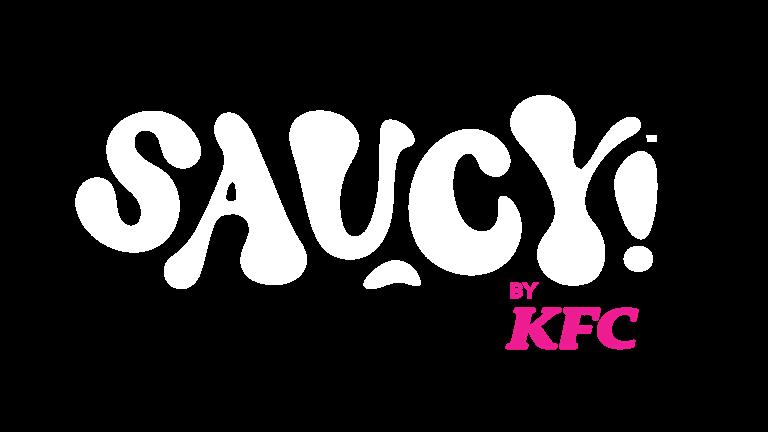
Sauce might be the vehicle, but delight is the destination – Christophe Poirier, Chief New Concept Officer at Yum! Brands on the vision, technology, innovation and partner strategies at Saucy by KFC.


YUM! BRANDS, INC. (YUM!), BASED IN LOUISVILLE, KENTUCKY, AND ITS SUBSIDIARIES FRANCHISE OR OPERATE A SYSTEM OF NEARLY
61,000 RESTAURANTS IN MORE THAN 155 COUNTRIES AND TERRITORIES
Yum! was named to the Dow Jones Sustainability Index North America, Newsweek’s list of America’s Most Responsible Companies, USA Today’s America’s Climate Leaders and 3BL’s list of 100 Best Corporate Citizens. In 2025, the Company was recognised among TIME
magazine’s list of Best Companies for Future Leaders. In addition, KFC, Taco Bell and Pizza Hut led Entrepreneur's Top Global Franchises 2024 list and were ranked in the first 25 of Entrepreneur’s 2025 Franchise 500, with Taco Bell securing the No. 1 spot in North America for the fifth consecutive year.


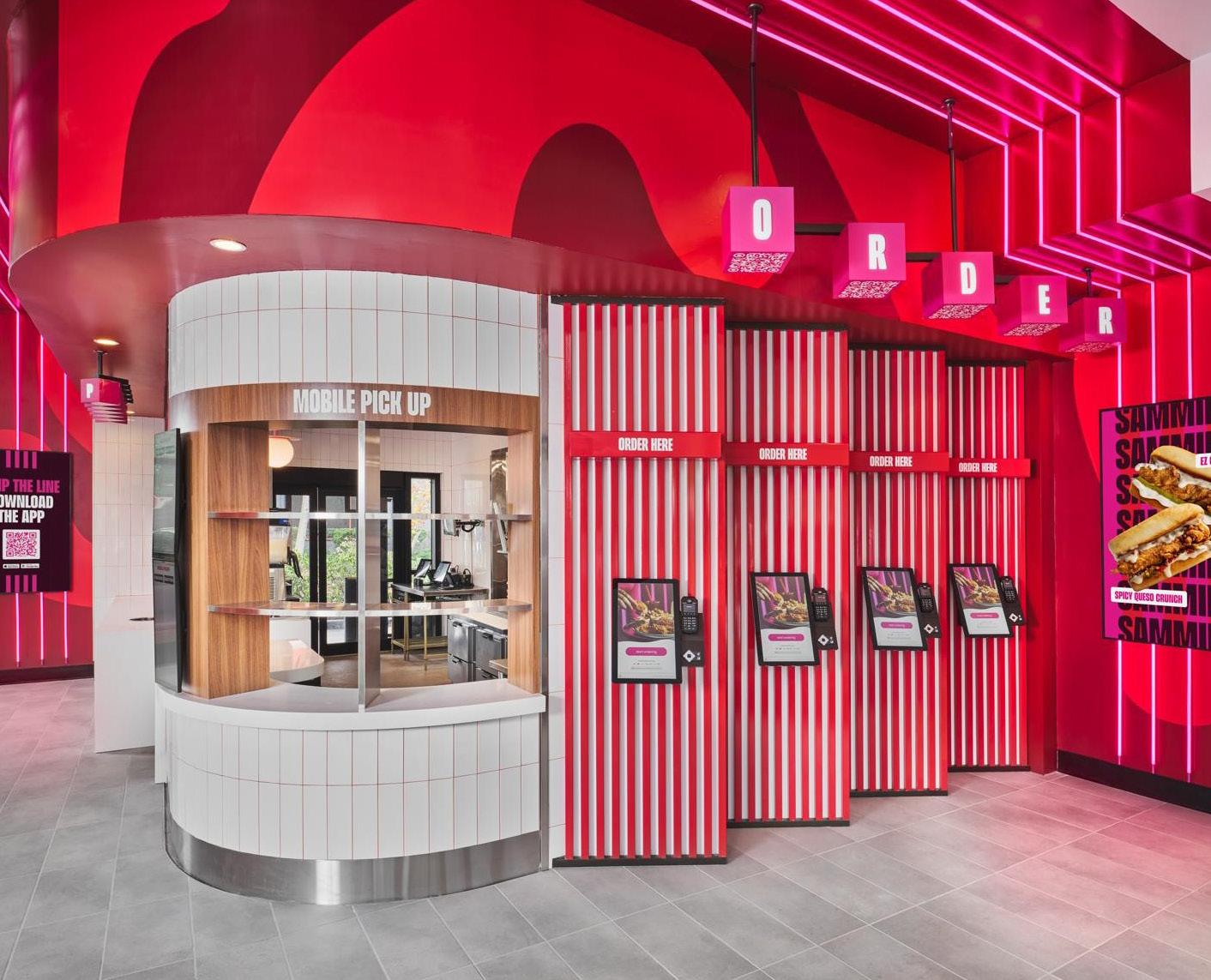
One of the latest ventures for Yum! was Saucy, a bold new concept restaurant backed by KFC’s worldrenowned brand.
Here to elaborate on how Saucy is designed to delight the boldest generations of diners with a modern look and feel, complemented by a totally tech-forward experience, is Christophe Poirier, Chief New Concept Officer at Yum! Brands.
Christophe insists that to understand Saucy as a spin-off of KFC, the first step is to contextualise the new brand’s business purpose and mission

arising from it, taken alongside its ambitious approach to disruption.
“At Saucy, our primary business purpose is to delight customers with new flavour experiences,” explains Christophe. “With this purpose in mind, we have different ways of moving from that purpose to a mission. The purpose is where we want to go. The mission is how we get there. So, how do we take our purpose and translate it into a mission?
“We know that chicken is a growing segment. Sure, we aren’t the only business serving chicken – but it is the
“WE CARRY THE CONCEPT OF DISRUPTION EVEN FURTHER BY ADDING DIGITALISATION AND TECHNOLOGY INTO THE MIX – AND THESE WERE AT THE FOREFRONT OF OUR MODEL WITH SAUCY FROM ITS VERY INCEPTION”
Christophe Poirier, Chief New Concept Officer at Yum!
fastest growing protein product, not only in the United States, but probably around the world.
“The questions then are, do we go after chicken as a category? Do we go after chicken as a form? Should we go with nuggets, tenders or another product? Before we launched Saucy,
we decided instead to pursue taste as our disruption to conventional practice.
“With a conventional approach, you are just fighting in the crowd. Our unconventional approach was to turn towards and lean into sauces. Here we opened up exciting new avenues regardless of the form our chicken


dishes take – because the sauce becomes the core of our services.
“But our disruption is not limited to placing sauces at the centre of our vision and mission. We carry the concept of disruption even further by adding digitalisation and technology into the mix – and these were at the forefront of our model with Saucy from its very inception. In the spirit of changing the game, the first person who joined me on the Saucy journey was not a culinary connoisseur but a tech expert.”
Christophe pauses to emphasise that delighting customers with new flavour experiences is only part of Saucy’s business purpose – there is a corresponding determination to delight its team members, inspiring their work and elevating the brand with the passion and excellence this cultivates.
Here, Christophe highlights Saucy’s strategic framework, PINK, as it structures this two-tiered approach to the brand’s purpose of delighting both customers and colleagues alike.
“To delight both customers and our team members, we came up with PINK as our strategic framework,” recalls Christophe. “PINK stands for Personalised, Instinctive, Next and Kinetic.
“‘Personalised’ encompasses people, customers, team members – everybody. We want everyone to feel special in their interaction with
our brand, and here personalisation is crucial.
“For instance, in our restaurants, we have dedicated, flexible relaxation areas for our team members to unwind and store their possessions. In our kitchens, we offset decision fatigue by enhancing our processes with AI, offering individual colleagues clear and timely instructions to make their lives easier. Here we have worked with strategic partners like Brahma AI Systems to ensure we have the best artificial intelligence technology at our disposal.
“In terms of our customers, we endeavour to know them as intimately as possible. Our Saucy app has 26 points of personalisation to get closer to our customers’ needs. If you prefer sweet over spicy sauces, your recommendations will reflect your personal flavour profile. The more customers interact with us, the better we can serve them.

“The ‘I’ in PINK stands for ‘Instinctive’ – a sentiment we extend to our guests and our team members alike. By partnering with companies like ROWE and Profitality, we have designed our restaurants and interactions with the brand to be a compelling, A+ experience.
“When you enter Saucy locations, it is so rewarding and easy to order, dine and work in our restaurants. From the way we design our physical spaces, like our kitchens and prep areas, to our app, the restaurant kiosks, QR
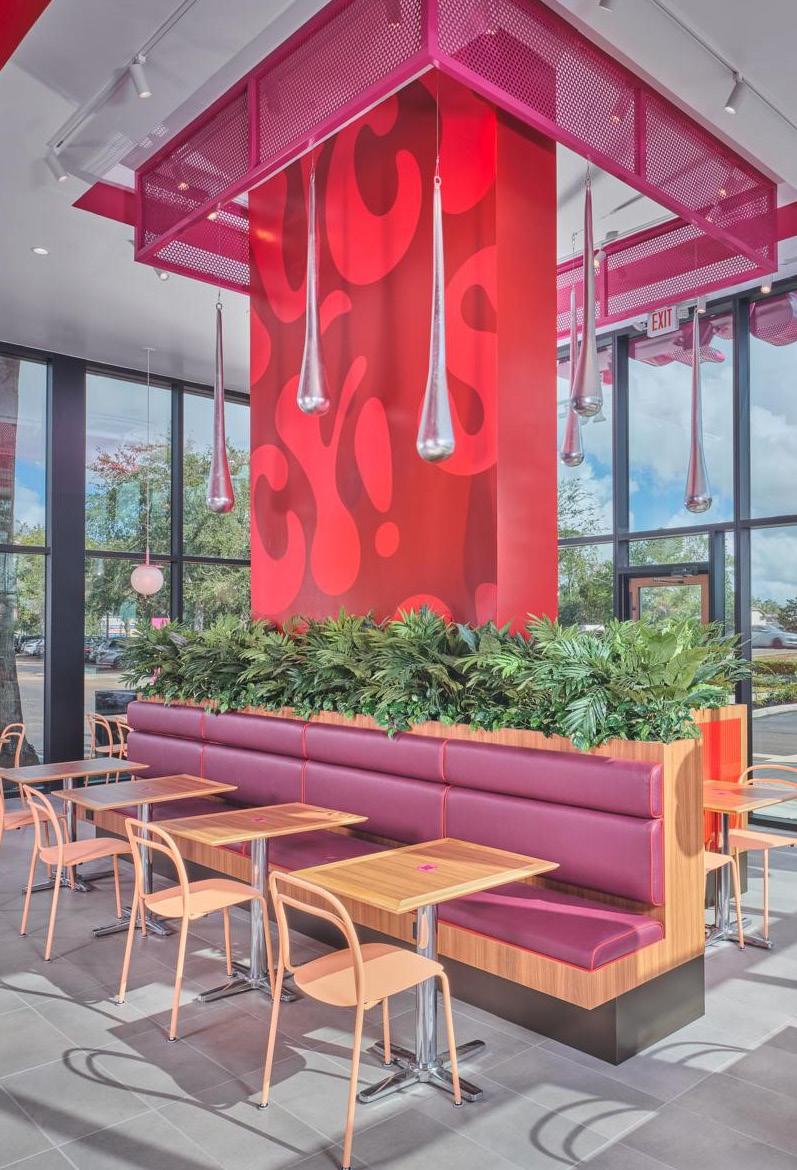






codes, third-party delivery service mechanisms and multiple ways to touch our brand – we strive for instinctive excellence across the board.
“The ‘N’ in PINK is for ‘Next.” We don’t follow trends or look outside for inspiration. We follow our own path, and this stems from our obsession with customer and team member metrics – which ultimately informs where we look ‘Next.’
“‘K’ stands for ‘Kinetic,’ which is all about how we maintain our momentum and keep the brand moving forward. I have seen the pace of change escalate in my career with revelations like digitalisation, social media and innovation. Nowadays, change unfolds at a hyperbolic speed. Ultimately, I believe this boils down to how connected we all are.
“Within this context of change happening at a crazy pace, we realised we couldn’t stay still with the Saucy brand – we had to embrace a kinetic approach. Slow, sequential
innovation has no place here. Instead, we recognise that the process of innovation has totally changed. Now, we test constantly, gauge if our experiments work, and feed the brand constantly on all fronts to validate these new ideas. If there’s momentum, we lean into this kinetic principle and run with it.”
With the PINK strategic framework front of mind, Christophe explains, the success of Saucy as a bold concept restaurant stems from how well the company integrates technology and convenience into the customer journey.
“Saucy is a true multi-channel brand –anywhere and ‘anyware.’ We provide guests with a seamless experience whether they choose to dine in, pick up curbside, drive through, or order for delivery,” says Christophe. “This flexibility means we’re always within reach, wherever and whenever the craving strikes
“And when we say ‘any-ware,’ we mean it. Customers can engage with Saucy through self-serve ordering kiosks in-
“OUR INTEGRATION OF TECHNOLOGY AND CONVENIENCE INTO THE CUSTOMER JOURNEY, THEREFORE, MUST BE SIMPLE FROM THE OUTSIDE AND COMPLEX ON THE INSIDE”
Christophe Poirier, Chief New Concept Officer at Yum!

store, our feature-rich native app, or via popular food aggregators, ensuring they can access our bold flavours through the channels that best fit their lifestyle. This holistic approach allows us to meet our audience where they are – from the drive-thru lane to the palm of their hand – creating a truly frictionless, personalised experience.
“Our integration of technology and convenience into the customer journey, therefore, must be simple from the outside and complex on the inside.
“To use one example, we work with Flybuy by Radius Networks, a topnotch technology company that works with the biggest players in
the US. Flybuy are key partners that provide us with cutting-edge AIpowered location technology to anticipate how long it will take a customer to arrive at our restaurant from their homes when they order to collect, so we only begin cooking at precisely the right time so the food is hot and fresh for their arrival.
“The same sentiment of seamless integration extends to our team members. We eliminate guesswork, interpreting and anticipating projected demands so they know exactly what to work on and when.
“For us, it’s the difference between symphony and cacophony. Every single instrument needs to play at the right time to create a harmonious,


Flybuy automatically fires orders to the kitchen based on the customer ’s location, minutes needed to make the order, and the chosen pickup channel (in-store, curbside, or drivethru.) By utilising Flybuy ’s AI-powered location engine, Saucy by KFC is achieving the fastest speed of service, enhanced guest experiences, maintaining the highest food quality and facilitating quick order handoffs.

"Flybuy is a key ingredient in our digital-centric vision, as they drive ef ficiency and create an optimal customer experience. We have set a new standard for convenience and innovation at Saucy by KFC and we are thrilled to collaborate with Flybuy.”
- Christophe Poirier, Chief New Concept Of ficer, KFC
beautiful experience for both our guests and colleagues.
“Here, technology is crucial. Humans make mistakes, and that is part of our charm. And while technology isn’t perfect, it offers a level of accuracy and coordination unreachable for humans acting alone.
“By balancing delighted team members with excellent tech solutions, we cultivate an integrated approach which creates a symphony, not a cacophony, in both our physical and digital experiences as a brand – ultimately delighting our customers.”
While Saucy is a tech-first brand, the menu is also a core component of the delight it offers its customers. According to Christophe, one of the key ingredients for success at Saucy in this regard is to keep things fresh –and not just in terms of the produce it serves customers. Here, Christophe explains, menu innovation is paramount.
“Menu innovation, for me, is based on three principles: truth, trust and passion,” elaborates Christophe.
“So we speak the truth in my team without any sense of hierarchy. We trust one another to discuss new ideas with an open mind. Lastly, we have a passion for finding the Saucy way to try these concepts.”
“But my strategic framework for menu innovation is not a new
one,” admits Christophe. “In fact, it comes from Raymond Loewy’s ‘MAYA Principle,’ popularised in the middle of the 20th century. This concept of ‘Most Advanced. Yet Acceptable,’ has been a guiding inspiration for our menu innovation at Saucy.
“For me, this is a brilliant concept because when you are embracing innovation, it helps to ask how far you can go without being intimidating or alienating the masses. This is particularly relevant when it comes to taste palates and experimenting with new flavours.
“Consider the concept of travelling the world of tastes, seeking to embed cultural staples such as chimichurri from Argentina, Indian chutney or creole from Louisiana. These flavours might not resonate as concepts with the masses in their pure form. In fact, they might be off-putting or intimidating because of the unknown element.

“But if we can pair these flavours with established ideas in people’s minds, we can make them more familiar, more reassuring and therefore more palatable.
“This is where our approach to creating innovative signature sauces comes in. We’ve explored hybrid sauces such as Chimichurri ranch, creole mustard, or spicy mango chutney with this MAYA Principle in mind.
“We’re taking that idea of discovery and innovation in our menu offerings





“WHAT TRULY EXCITES ME IS HOW WE ARE CONSTANTLY
PUSHING OUT SERVICES TO THE NEXT LEVEL, HONING IN ON OUR OWN EXCELLENCE WITHOUT WORRYING ABOUT COMPETITORS, AND WATCHING THE
GROWTH FOLLOW”
Christophe Poirier, Chief New Concept Officer at Yum! and anchoring it to known entities for our guests.
“While we can be disruptive with our technology at Saucy, we have to be more incremental and considered in our approach to menu innovation, while still striving to stand out.”
Wrapping up our conversation, Christophe captures the excitement permeating the Saucy brand as he and his colleagues look ahead to the future.
“I am an optimistic and excited person by default, but it is hard to feel anything other than positivity with Saucy and where we’re going,” beams Christophe.
“Finding a concept that resonates with the market isn’t easy, but I thoroughly believe we have found a sweet spot with Saucy.
“For me, growth is an outcome, not a goal. What truly excites me is how we are constantly pushing out services to the next level, honing in on our own excellence without worrying about competitors, and watching the growth follow.


“At a more tangible level, I’m particularly excited by our growing use of AI. We already deploy it comprehensively, but we will only continue down this path – further improving our team members’ experiences, customer service and operations.
“Then there are the new products and sauces we will bring to life, something we all enthusiastically embrace at Saucy, which will be a staple for the brand in the years ahead.”
To learn more about Yum! Brands and Saucy by KFC, visit yum.com.
Turn over for Added Value with Christophe.


For Christophe, the culture at Saucy is inspiring, exhilarating and a crucial cause for celebration.
“When you look at your assets and liabilities, the biggest asset for any company is not in the balance sheet but your people and culture,” says Christophe. “With this in mind, from day one, we have built Saucy with four pillars as our foundation: love, shine, wow and grow.
“Without ‘love,’ you cannot go anywhere in any business – it is an incredible engine, the most beautiful fuel you can drive on.
“When we say ‘shine,’ we refer to helping people cherish their significance. When our team members learn, grow, take pride in their achievements and feel like they are truly contributing – they will shine.
“We strive to cultivate the ‘wow’ factor with our colleagues and customers alike, whether this is through our onboarding processes, delicious tastes or our in-store experiences.
“Last but by no means least, we have ‘grow.’ When love, shine and wow all come together, we are positioning ourselves to grow naturally – as individuals, as a team and as a business.”
Christophe believes in leading with the best interests of his ‘flock’ front and centre.
“A shepherd guides, provides and protects,” says Christophe. “The shepherd leadership style is key for me, and I apply it every single day with my team and colleagues.”
Connect with Christophe



New research shows 22 million British households are hoarding defunct tech, as 50% of consumers say they’d rather replace than repair.

MILLIONS OF BROKEN SMARTWATCHES, PHONES, AND TABLETS ARE GATHERING DUST IN DRAWERS ACROSS THE UK AS CONSUMERS REJECT REPAIR IN FAVOUR OF REPLACEMENT, ACCORDING TO A NEW NATIONAL SURVEY.

he research, commissioned by wearable tech brand UNA Watch, reveals that almost half of Brits (47%) would rather buy a new device than attempt to fix a broken one. For smartwatches, the picture is even bleaker – half of users (50%) say they’d ditch their device outright if it broke,
compared with just 28% who would consider a repair.
It's a trend that has serious implications for the UK’s growing e-waste problem. More than a third of people (38%) admit to having a drawer dedicated entirely to broken or obsolete gadgets, amounting to an estimated 22 million households

hoarding defunct tech. The UK now produces 24kg of e-waste per person annually, making it the second-worst offender globally behind Norway.
The nationally representative survey, carried out by independent insights agency Opinion Matters, highlights how widely this frustration is shared. More than half of respondents (54%) believe manufacturers deliberately make products unrepairable – a sentiment even stronger among older generations, with 66% of the Silent Generation (aged 79+) and 65% of Baby Boomers (aged 60-78) holding that view.
Yet despite the dominance of disposability, many are keen to take repair into their own hands. Half of Brits (50%) say they’d like to fix their broken belongings, but feel they lack the skills or information to do so. Nearly six-in-10 (56%) say they don’t have the knowhow to repair tech, with the figure rising to 70% among Baby Boomers. And a third (34%) say they wouldn’t even know where or how to recycle their old devices.

Wearable tech entrepreneur Lewis Allison, co-founder of UNA Watch, believes this throwaway culture is neither inevitable nor sustainable. His Scottish company is launching the world’s first modular, repairable GPS sports watch via Kickstarter – a device that can be upgraded and fixed by the user, not discarded. He was inspired to create the device after his wife was stung by a £300 bill
to fix her Apple Watch two days after buying it.
He said: “The tech industry has normalised disposability, but it doesn’t have to be this way. When a screen cracks or a battery dies, that shouldn’t mean the end of the device. Smartwatches should last, evolve, and be repairable by wearers – just like any other tool people rely on daily.”

“THE TECH INDUSTRY HAS NORMALISED DISPOSABILITY, BUT IT DOESN’T HAVE TO BE THIS WAY. WHEN A SCREEN CRACKS OR A BATTERY DIES, THAT SHOULDN’T MEAN THE END OF THE DEVICE”
Lewis Allison, co-founder of UNA Watch




Backed by more than £300,000 in early investment, UNA Watch has now raised more than £240,000 through the Kickstarter, backed by more than 1,200 orders. But for now, the brand is focusing on direct-toconsumer sales as more and more people are rebelling against the stranglehold of big tech.
Lewis believes modular design could help change attitudes, allowing consumers to extend the life of their devices and push back against builtin obsolescence.
He continued: “We’re giving people the power to fix their own tech, saving them money while reducing e-waste. Right now, the only alternative to replacement is an expensive repair service – if one is even available.”
With 44% of people saying they are worried about the environmental impact of e-waste, momentum may be building for a more sustainable approach. UNA Watch hopes to sell 2,500 units through the campaign, generating £500,000 in revenue and building a community of early adopters committed to tackling one of the planet’s fastest-growing waste streams.
To register for the UNA Watch Kickstarter, visit unawatch.com.
Source: UNA Watch
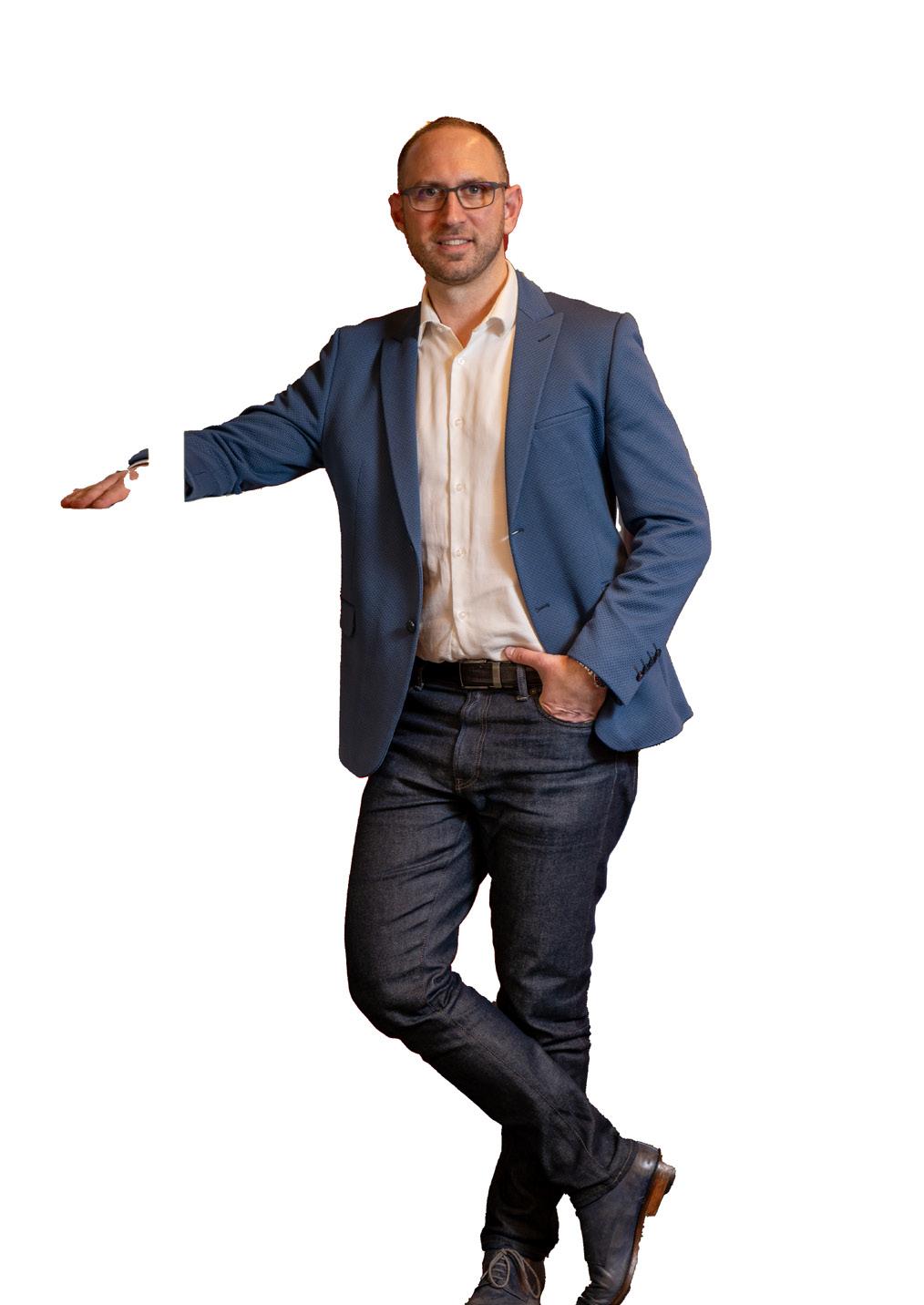

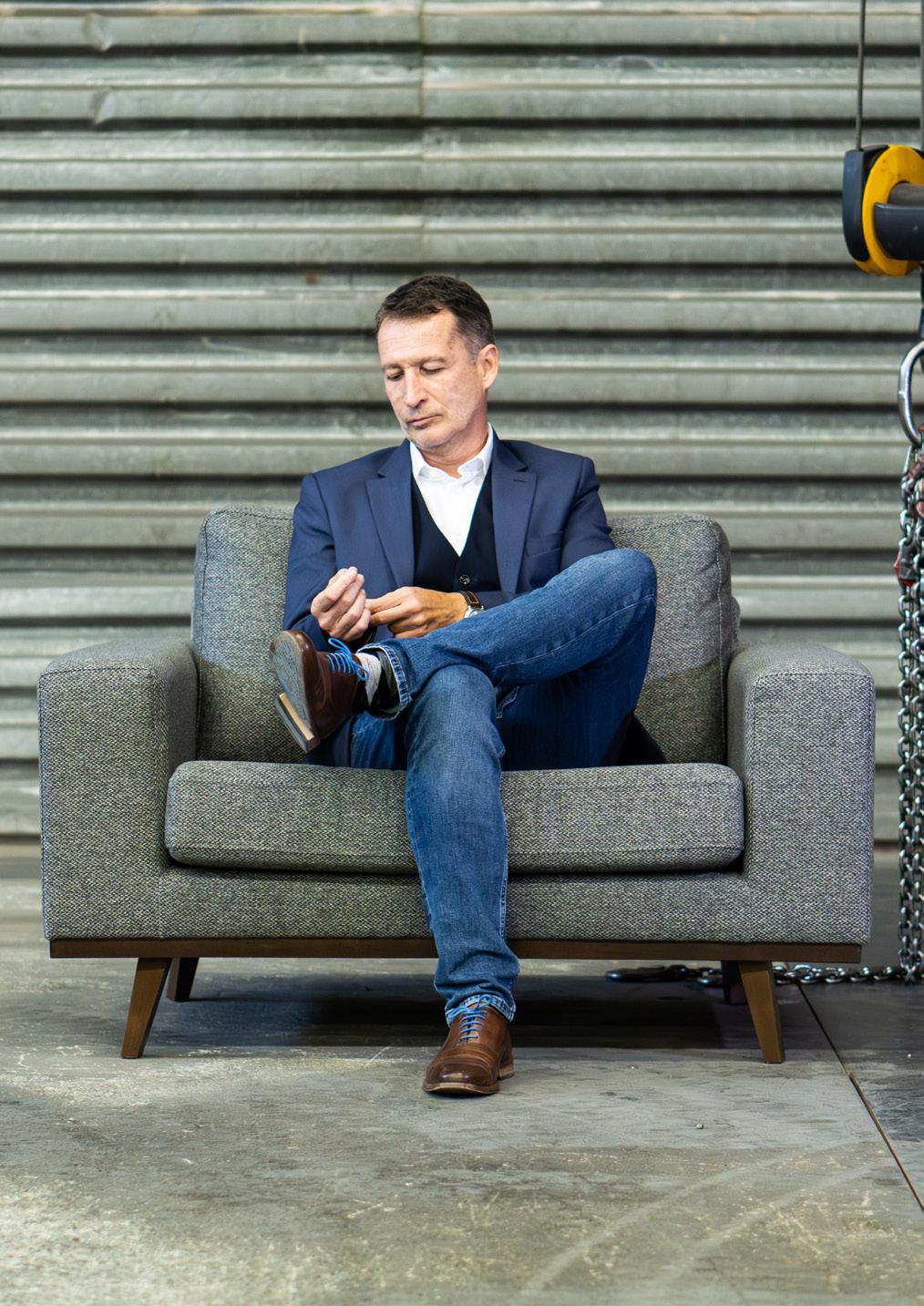





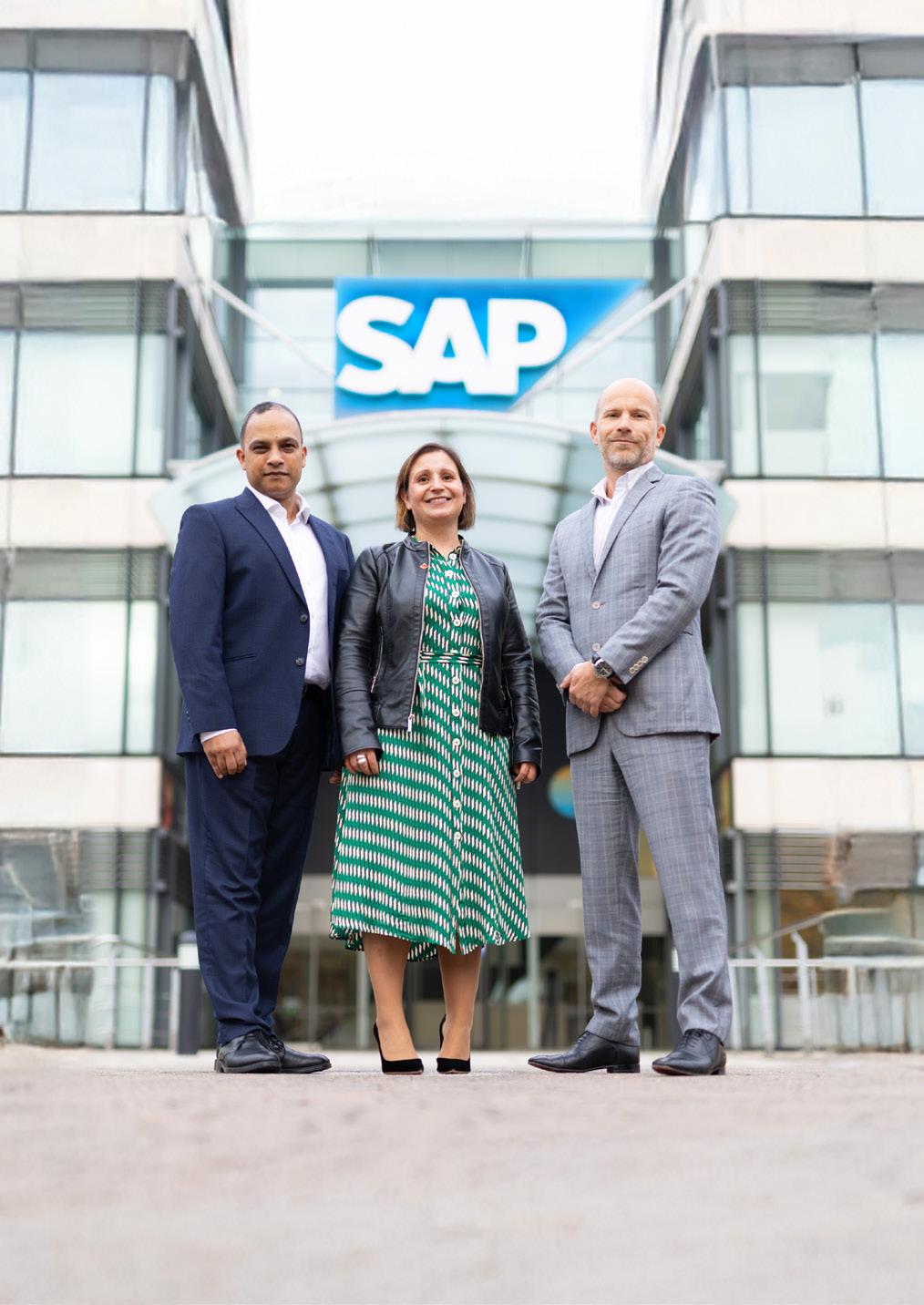





"The team were professional and diligent throughout"
Leigh Feaviour, CTIO for BT’s Supply Chain
"Absolute pleasure working with the Digital Innovation team"
Mun Valiji, Chief Information Security Officer at Sainsbury’s
"A highly professional approach"
Andy Brierley, Vice President, Cloud Application Modernisation at IBM
"Digital innovation Magazine is a very flexible and professional team"
Kim Larsen CTIO, T-Mobile Netherlands

Minja Karl, Logistics Excellence & Transformation Director, CEE, at Molson Coors, on the mindset, technology and strategy behind transforming the company’s regional logistics operations.

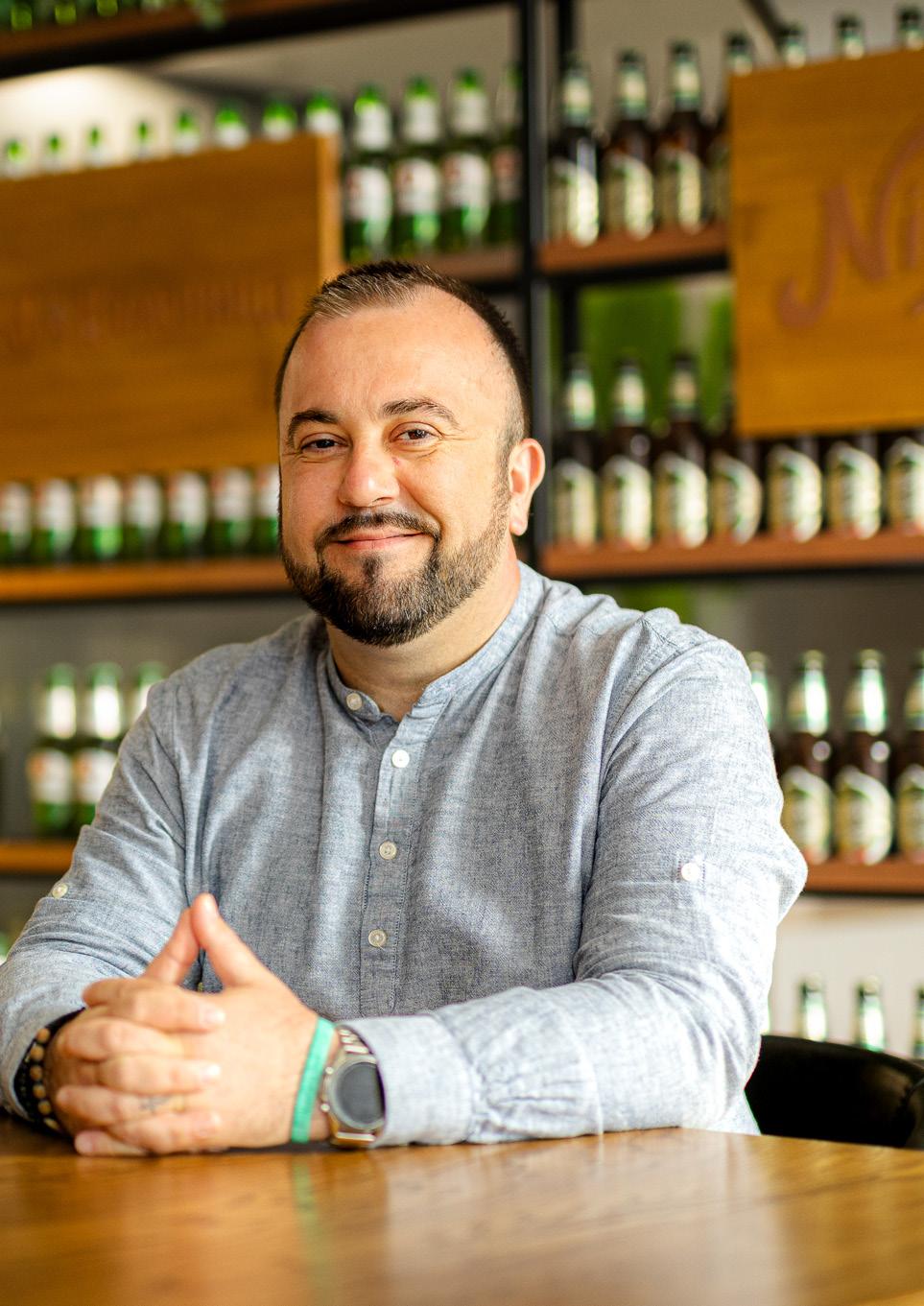
Molson Coors Beverage Company is а publicly traded company on the New York and Toronto stock exchanges, operating with two business units – Molson Coors North America and Molson Coors
In the region of Central and Eastern Europe (CEE) the company operates in the following countries: Bosnia and Herzegovina, Bulgaria, Croatia, Hungary, Montenegro, Romania, Serbia, Slovakia, Slovenia, and the Czech Republic – producing some of the most beloved beer brands in the region: Staropramen, Kamenitza, Bergenbier, Borsodi, Ožujsko, Jelen and Nikšićko Pivo.
Here to discuss the logistics strategy, innovation and transformation driving the company forward in this region is Minja Karl, Logistics Excellence & Transformation Director, CEE.
As Minja explains, in order to understand the logistics endeavours of Molson Coors CEE, the regional dynamics of the countries where the company operates are fundamental factors for consideration.
“The CEE is quite a complex and diverse region, and while we are domestically orientated, we are still exploring synergies between the region’s countries and how we interact on a global level,” says Minja. “So when we discuss logistics projects or strategies – such as standards, optimisation or processes – we must consider the interconnectedness of our operations.

“One of the key projects we have focused on for our logistics transformation is standardisation – not only from the process point of view, but also in terms of performance tracking.
“All of our countries’ logistic teams have the same KPIs from both a local and regional level. These include targets related to existing factors like productivity, but also new projects like digitalisation and automation.
“But in the journey of innovating our logistics strategy, one of the things I’m most proud of is how we’ve gathered
the logistics teams around unified goals, embraced working together and cultivated a shared sense of where we’re going and why.
“All the logistics leads from our region’s countries communicate with me daily, and we are all sharing information. Ultimately, this team spirit and collaboration have allowed us to experiment with new practices and turn them into best practices for the entire region – whether this be at a high strategic level, or at a smaller grassroots level of how we clean and maintain our facilities, or conduct workshops to identify local needs.”

Beyond standardisation, Minja emphasises the importance of digitalisation and new technology within the logistics transformation journey at Molson Coors in the CEE region.
“Here in the CEE, we are constantly working on digital transformation,” says Minja. “I have been part of the Molson Coors CEE regional team for eight years, but in the three years of my current role, I have witnessed our digitalisation projects and practices develop and grow exponentially.
“For instance, all of our countries use software called Traceability,
“As a part of the Molson Coors global business, we absolutely embrace the importance of our sustainability”
Minja Karl, Logistics Excellence & Transformation Director, CEE, at Molson Coors

which we are deploying to track our goods, starting from sourcing the raw materials to reaching the end customers. It’s a fantastic platform, and part of this is conducting regular assessments and checks to ensure our functionality and performance remain high.
“Another crucial part of our digital transformation is implementing a warehouse management system (WMS), and we realised we could tap into WMS capabilities on the Traceability platform. From here, we smoothly deployed new WMS capabilities at a very competitive price for such software currently available on the market.
“Similarly, we have also been exploring how to optimise our logistics operations with a transport management system (TMS) and order management system (OMS).
“But before we embark on new digital transformation projects, we conduct comprehensive pilot studies to assess all the avenues before us and then conduct a feasibility study for the entire region. For instance, we launched our TMS and OMS in Romania as a pilot study before rolling it out successfully and smoothly to the rest of the region.
“There have been some great examples of logistics innovation projects tested at the country-bycountry level, which we will look to explore further in the future. In Croatia, our team in Zagreb developed a

very simple Android app to make the operations paperless. They also installed tabs in their forklifts, which display information but also dictate that the vehicle cannot be started without completing an environment, health and safety (EHS) checklist.”

After touching on the paperless project in Croatia, Minja elaborates on how sustainability and environmental responsibility are core considerations in the logistics transformation journey at Molson Coors CEE.
“As a part of the Molson Coors global business, we absolutely embrace the importance of our sustainability, carbon footprint and ESG performance as a region,” insists Minja. “There is no project – whether this be in logistics, IT or

elsewhere – that is not interconnected with our sustainability stream. For me and my team, our WMS, TMS and OMS projects, alongside our digital transformation more broadly, all supported progress towards our sustainability agenda.
“Another point of pride here for us as a logistics team was how, in the years from 2019 to 2023, we optimised our transportation processes with tremendous positive results. In this period, the average truck fill rate grew by 9%, we cut our emissions by 2,500 tonnes of CO2, and we decreased the total distance driven by 2.7 million
kilometres. Four of the countries in the CEE region have already installed solar panels or plants for their electricity needs. 99.7% of the materials used in our beer production and packaging processes are either recyclable, compostable or reusable. And, of course, these sustainability steps also came with associated cost reductions too.
“In addition to these regional sustainability projects, we have our overarching global strategy, which we call Our Imprint at Molson Coors. It includes the steps we need to take in the long term, by 2030 or by 2050, to comprehensively make progress with
our carbon footprint and overall sustainability agenda. It truly is a huge focus for us as an organisation.”
According to Minja, it would be impossible to maintain momentum for the digital transformation journey and sustainability agenda at Molson Coors without the corresponding continuous improvement mindset and operational excellence behind them, enshrined by the World Class Supply Chain Excellence programme.
“We have a programme at Molson Coors called the World Class Supply
Chain (WCSC),” explains Minja. “Under this expansive umbrella, there are twelve pillars.
“One of the most important enablers for deployment of the WCSC programme is called ‘Run to Target,’ which was deployed back in 2016. The main purpose of the entire WCSC programme, and especially within ‘Run to Target,’ is a mindset of continuous improvements, chasing our targets and ourselves to make progress.
“To turn this back to the logistics teams, another pillar is called ‘Supply
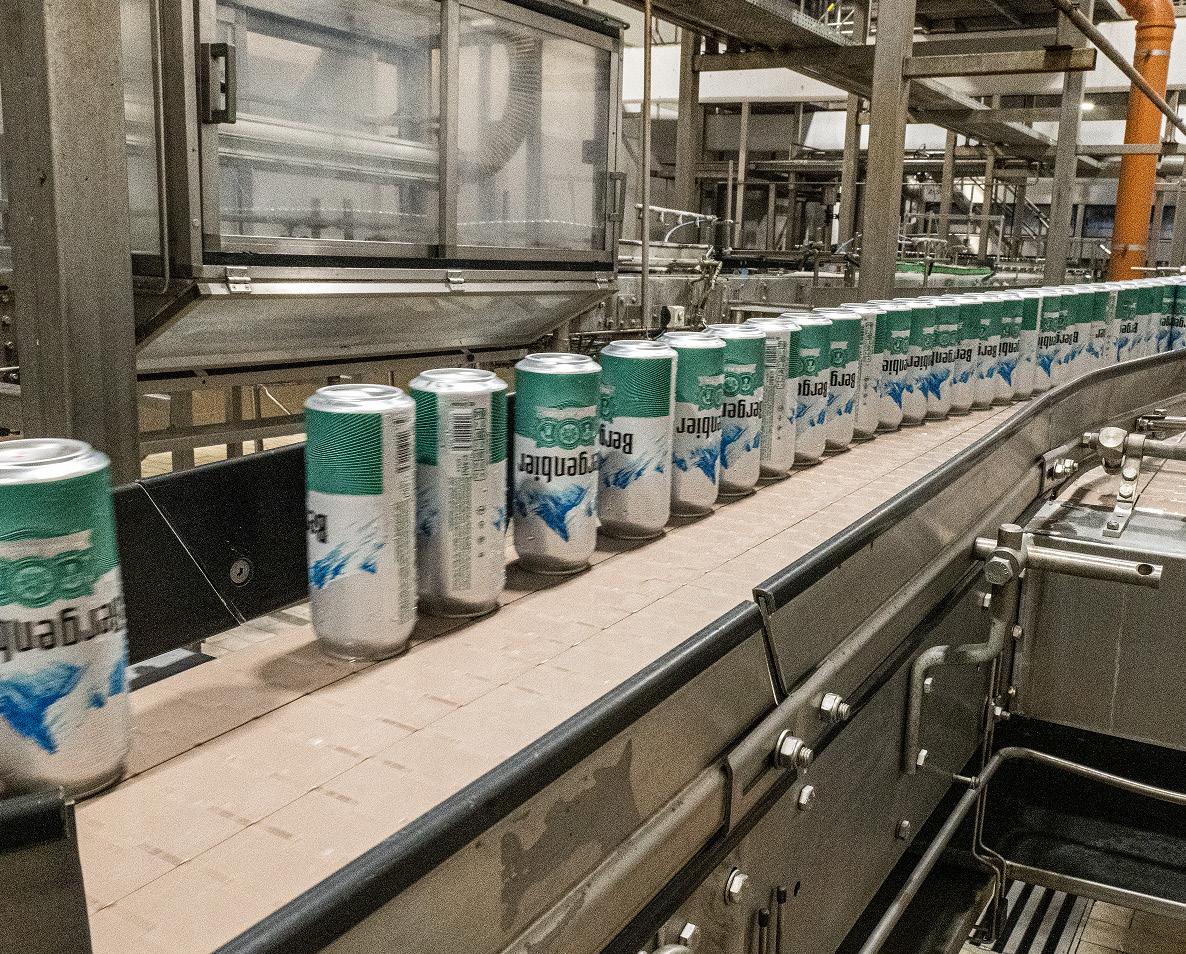
“Our collaboration with Everstream is a fantastic example of a highly successful partnership”
Network,’ under which I deployed a logistics aspect to the pillar three years ago.
“Here, we have five priorities:
1. Order management
2. Transport management
3. Warehouse management
4. Asset care and loss prevention
5. Safety and distribution
“At a fundamental level, my aim was to embrace continuous improvement and operational excellence to make progress in performance as a region, spanning all five priorities.”
Implementing such improvements, Minja adds, requires external collaboration and a robust partnership strategy.
“Partnerships based on trust and mutual success are fundamental to Molson Coors, and this is particularly evident within two important logistics streams here – Route to market and Site loss analysis,” says Minja. “Under these two streams, our
main intention is really to follow the process flow, but also to follow the information flow. No business stands alone, and we are all connected to our partners. Route to market and Site loss analysis are beyond our primary internal orientation, so they require external support, knowledge and synergies.
“Here, our collaboration with Everstream is a fantastic example of a highly successful partnership. Plenty of our colleagues in the broader supply chain team collaborate with Everstream on a wealth of different topics or projects.
“One of the biggest areas we are exploring with Everstream is risk forecasting and mitigation. They are helping us dive deeper into our supplier and commodity analysis, assessing where risk might come from and how we can adapt proactively to offset them.
“We also work with Everstream to mitigate risks related to transport lanes. Even though we are somewhat domestically orientated,


See what’s coming, act faster, and make informed decisions at every level of your supply chain to thrive in an unpredictable market.
Everstream Analytics delivers the AI-driven real-time risk insights that empower the world’s leading supply chains to anticipate and overcome supply chain disruptions:
Unmatched visibility across global, multi-tier networks
Real-time alerts for 120+ types of risk events
Automated scoring across 30+ critical risk indicators
Seamless integration into your existing systems
ahead of the competition with actionable intelligence.
Turn Risk into Opportunity.
Transform supply chain risk into a strategic advantage.
Learn more about why Everstream was recognised as an industry leader

our logistics operations do entail border crossings and international movement of goods. Collaborating with Everstream has been a huge benefit to us in these regards.”
Looking ahead to the future, Minja is buoyant about the coming years at Molson Coors and where he sees the logistics industry heading.
“Our company culture and the people who make it so incredible will help us embrace the future at Molson Coors CEE,” says Minja. “We put our people first, teaching them but also learning from them, which is something I adore. I am also excited by and proud of how we are developing our teams further, having people from various backgrounds and with different perspectives, male and female colleagues, young people with less experience and teammates with rich expertise.
“We will also continue to embrace digital transformation, new technologies and automation, while also enshrining sustainability in our operations to maintain momentum and progress in the coming years.
“I truly believe that there is nothing the future might hold that we will not be able to survive or seize and then thrive.”
Learn more at molsoncoors.com.
“Everybody needs to balance their personal and professional lives,” says Minja. “I love working in the beverage industry, but my life beyond it is also essential. I am a proud father of a beautiful young woman, so family is of the utmost importance. I am also a

musician, and I play three instruments: clarinet, saxophone and guitar. Hobbies, family and enjoying life are something I always make a top priority because the only certainty we have is the uncertainty of the future, so we must enjoy the here and now as much as possible.”
Connect with Minja
“I thoroughly enjoy attending specialised logistics and supply chain business events,” says Minja. “Two I would really like to recommend are both hosted in Germany: LogiMAT, Stuttgart and Transport logistics, Munich.”
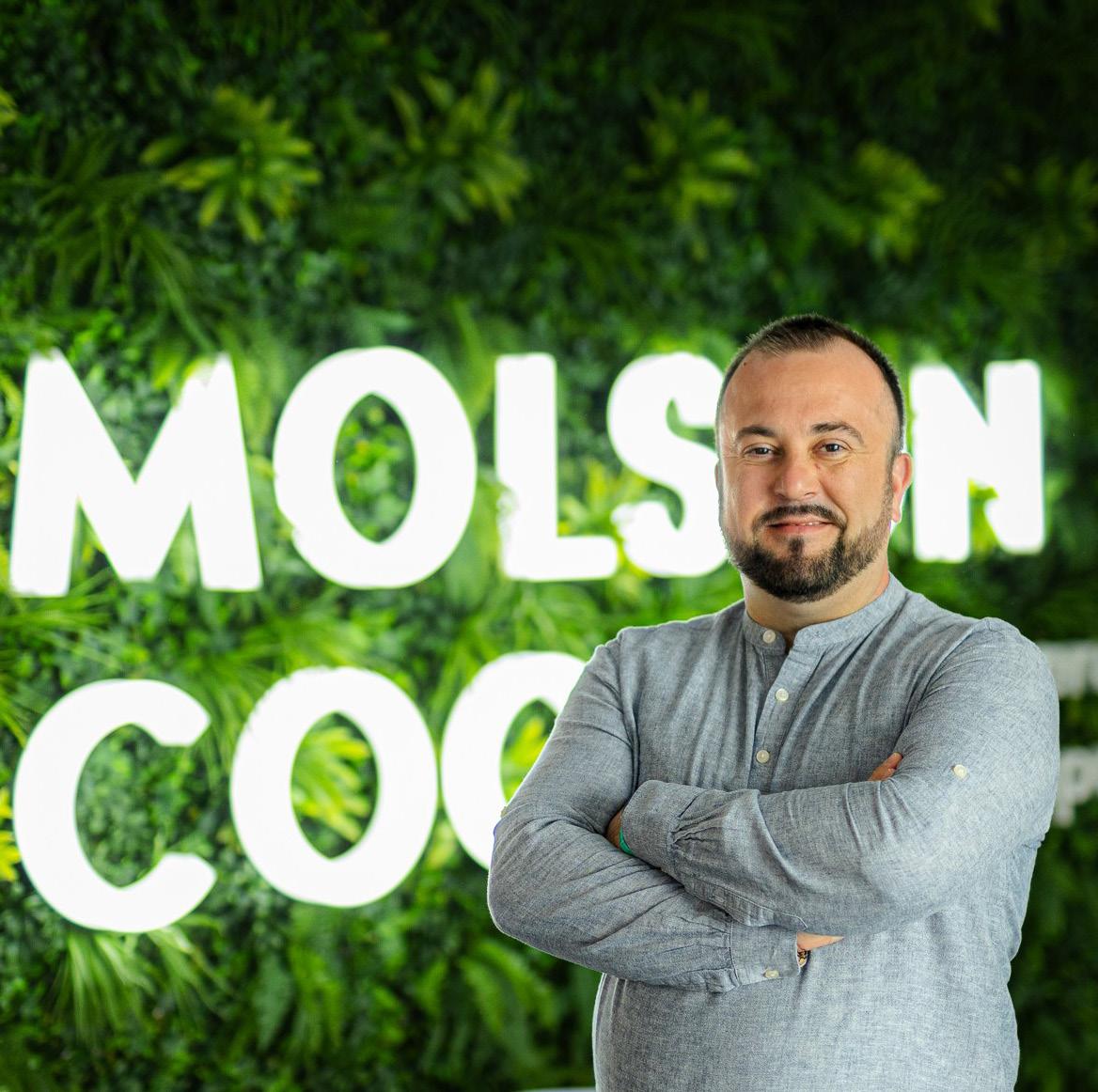



Insights from leading specialty insurer Beazley on deploying new technologies and integrating fresh tools for design firms.
It’s an exciting era of rapidly developing to design professionals, but prudence and strategy before these technologies professional firms’ practice and procedures.
egardless of any increased efficiency that artificial intelligence (AI) or any other technology may provide, design professionals cannot rely on the output of any tool to the exclusion of their professional judgment.
Indeed, such tools must be considered a supplement to, not a substitute for, professional judgment. This article explores risk management considerations when using innovative technology.
Let’s start at the beginning:
Fundamentally, design professionals have an obligation to meet the professional standard of care. The definition of the standard of care is constant: a design
professional’s performance must be consistent with the degree of skill and care ordinarily exercised by reasonably prudent professionals performing similar services at the same time, in the same locality, under the same or similar circumstances.
However, the manner in which the reasonably prudent professional performs those services evolves with emerging risks combined with changes in technology, techniques, building materials, societal norms and expectations.
The standard is a snapshot in time. Professional practices that may have been consistent with the standard of care 50 years ago, may not meet the standard of care today.

developing technology and tools available
requires careful deliberation technologies are embraced as part of design procedures.


For example, for many years, the use of asbestos in residential construction was common practice because of its insulation capabilities, strength and fire-resistant properties. Now, using asbestos is prohibited and to do so would be a breach of standard of care because we know exposure to friable asbestos contributes to diseases such as lung cancer, asbestosis and mesothelioma.
Still, design professionals do not perform in a vacuum and client objectives impact design professionals’ decisions. Time and money are of primary importance, and clients expect design professionals to meet the project schedule and perform within the budget, even if those goals are unrealistic. To keep clients’ goals in line with the standard of care, a robust risk management programme must

include effective client communication and detailed project documentation.
Client communication should be frequent and constructive and can be broken down into three prongs:
1. Inform:
In a claim situation, a common client argument is that the client relied on the design professional as an “expert”
and, therefore, the design professional should have told the client if there was a potential problem and, moreover, should have been able to prevent the problem. While this argument is usually a tactic, design professionals often are more knowledgeable than clients regarding applicable laws, codes, technology, historical weather information, and innovations, so design professionals should discuss known or common issues, practices, limitations, and challenges with the client especially at the programmatic stage of the project. Design professionals must communicate with purpose and may need to involve additional staff to analyse issues and present possible solutions to clients, depending on the complexity of the project.
2. Educate:
Educating goes hand in hand with informing clients, but design professionals ought to spend more time and effort on client communication if they deem a particular client or project as risky in the “go / no-go” risk management project analysis. Design professionals should dedicate senior staff to these projects and designate a point person with strong interpersonal and communication skills who has the fortitude to effectively speak with clients in potentially difficult situations.
3. Manage expectations:
Claims are made against design professionals for a host of reasons, but the nucleus of all claims is that
client expectations are not met. The more effort and attention design professionals invest to inform and educate clients, the more likely design professionals can manage client expectations, deal with issues as they arise, and deliver a successful project that is claims-free.
There may be colliding concepts when clients want design professionals to utilise new technology. It may be true that a project would be better able to withstand adverse weather events, or better able to prevent a bad actor from entering a building with the intent of gun violence, or achieve superior air circulation if cutting-edge technology is used.
However, clients need to understand that use of new technology and techniques may radically increase the budget for the project and may conflict with other client goals (eg designing for insulation efficiency likely conflicts with designing for air circulation to achieve “safe air” as a result of COVID 19 health concerns).
In addition, design professionals must manage client expectations that use of new technology inherently has risk and the design professional does not guarantee a specific result, regardless of the means and methods the design professional employs.
Timely documentation is arguably as important as communication practices. Design professionals may expend significant effort to inform, educate and manage client expectations and still be sued.
A well-documented project file is critical in a claim situation to avoid the dreaded “he-said, she-said” debacle. A common refrain among attorneys is: “If it’s not in writing, it didn’t happen.”
Meeting minutes, summaries of phone calls, and memorialisation of client decisions (especially those that are inconsistent with design professionals’ opinion as to how to proceed) are valuable to mount a defence that the design professional performed consistent with the standard of care.
An important caveat is that documenting disagreement with a client decision is not a valid excuse for design professionals proceeding in a manner that is reasonably known to violate applicable laws, codes, regulations or the standard of care. Further, one-sided documentation prepared by design professionals that is not fully executed by both parties is not binding on clients.
In short: design professionals should make it abundantly clear that use of new technology does not mean design professionals’ performance will be perfect and some amount of errors and omissions are expected on all projects.
In January 2024 Beazley hosted a risk management webinar attended

“Design professionals need to proceed carefully so the use of technology ultimately enhances the quality of the deliverable without significantly increasing the professional liability risk”
by 500 design professionals, where attendees discussed professional liability risks associated with using artificial intelligence. When Beazley then polled the audience about their use of AI, it learned that 90% had no staff training or procedures in place to use AI when performing professional services.
About half of the “maybe” attendees planned to use AI in the next 1-2 years once they understood the risks, while a quarter said they will use AI, and a quarter said they will not use AI in that time frame. These polls illustrate that it is critical for design professionals to understand the risks associated with using AI and to implement firm training and procedures when, and if, they decide to use AI in their practice.
There are undoubtedly numerous potential advantages to using AI yet

to be realised, but we must proceed cautiously.
Two significant risks design professionals must manage are:
1) maintaining the confidentiality of client information as required under the applicable professional services agreement, and 2) avoiding infringement of intellectual property rights.

Most professional services agreements require design professionals to maintain the confidentiality of clients’ information. To avoid a breach of contract allegation, it is generally best to clarify that design professionals are permitted to disclose information that is in the public domain, if disclosure is required by law, or if disclosure is reasonably necessary for the defence of any suit or claim.
These narrow exceptions to the confidentiality obligation are likely insufficient when it comes to using project-generated information on AI platforms. If design professionals download any project-generated information to an AI platform,

there is a significant risk of breaching contractual confidentiality obligations.
Contracts often broadly define confidential client information to not only include all information provided by clients, but also all work product created by design professionals and their subconsultants. Further, confidentiality provisions often require design professionals to return all confidential information to clients upon demand or completion of the project
and certify such return or destruction. These obligations may preclude downloading project documents to a public or firm-managed private AI platform.
There are two sides of the risk coin related to infringing intellectual property rights: 1) using information from AI platforms, and 2) downloading information to AI platforms. If design
professionals pull and use information from public AI, design professionals are in danger of infringing intellectual property rights of another firm by using such information.
Copyright protection is automatic from the moment an original work of authorship is created and registration with the US Copyright Office is not necessary for the protection to attach. Formal copyright registration is required to bring an infringement claim, but copyright owners can overcome this hurdle because they are allowed to register if they discover a third party is using their work product. Design professionals ought to consult with counsel to research whether use of specific information obtained from public AI platforms would violate intellectual property rights, since this is a complex area of law.
On the other side of the coin is the risk that design professionals violate clients’ intellectual property rights by downloading their own professional work product to AI platforms.
Clients often contractually require design professionals to transfer copyright of all professional work product to clients. From a risk management perspective, Beazley recommends against transferring copyright to clients.
Relinquishing copyright grants extremely broad rights to clients and potentially subjects design professionals to significant risks. Copyright transfer allows clients to
reuse the work product on other projects at clients’ sole discretion, without having to pay design professionals for such reuse, and could subject design professionals to professional liability exposure on those future projects, even though design professionals were not involved.
In the AI context, the broad transfer of copyright arguably prohibits downloading work product to an AI platform, yet another compelling reason to maintain copyright of professional work product.
Beazley recommends that firms establish a committee to focus on the risks associated with using new technologies. This team should implement a formal, written policy detailing the permissible and impermissible uses of new technology, meet regularly to review, modify and update it and educate all staff regarding the policy and procedures. The committee may consider the following when establishing a policy:
1. Establish an application process: design professionals should apply to the committee in writing for authorisation to use AI, including downloading or uploading to an AI platform, and all decisions should be logged
2. Reinforce QA/QC: use of AI is not a substitute for the firms’ QA/QC regimen. Ultimately, any deliverable should go through the same

vigorous review process regardless of the tools used to prepare it
3. Make sure everyone is trained: establish onboarding training for new employees and refresher training for all regarding firm procedures and updates to the policy
4. Boost mentoring efforts: enhance mentoring to ensure junior staff have solid training for tasks that AI may eliminate from the firm
As suggested by the foregoing commentary, it is critical to keep track of contractual confidentiality obligations and transfer of copyright of work product. More generally, pay
close attention to contract language that requires or prohibits the use of AI. Beazley does not recommend proactively stating whether design professionals will or will not use AI as a tool on a project, and design professionals should push back on attempts by clients to dictate the means and methods used in the design process.
As always, good contracting practices are paramount. The contract should include appropriate standard of care language, and any indemnity obligation should be limited to the extent damages are caused by the design professionals’ negligent performance of services, not based on whether AI or other innovation was or

wasn’t utilised. Design professionals should reject warranties of services and guarantees that the project will achieve any particular result.
If the client insists that the firm utilise new technology in its practice, design professionals should discuss the use of an express disclaimer with their legal counsel, ideally something like the following would be considered:
“Client understands that use of innovative technology, equipment, materials or systems, including artificial intelligence (collectively “Innovation”), inherently involves some risk given the novelty of innovation. Professional shall exercise reasonable professional efforts when utilising
Innovation, including its decision to use or not use Innovation, but makes no express or implied guarantee or warranty with respect to the services rendered, including that the use of Innovation will achieve any particular result or savings.”
We’ve just scratched the surface of how innovative technology may be used by design professionals. Design professionals need to proceed carefully so the use of technology ultimately enhances the quality of the deliverable without significantly increasing the professional liability risk.
Source: Beazley
double-edged
Unmanned Aerial Vehicle (UAV) technology and counter-tech advancements, simultaneously also fuelling new investment opportunities,

technology is driving anti-drone innovation simultaneously sparking disruptions but opportunities, according to the Heligan Group.
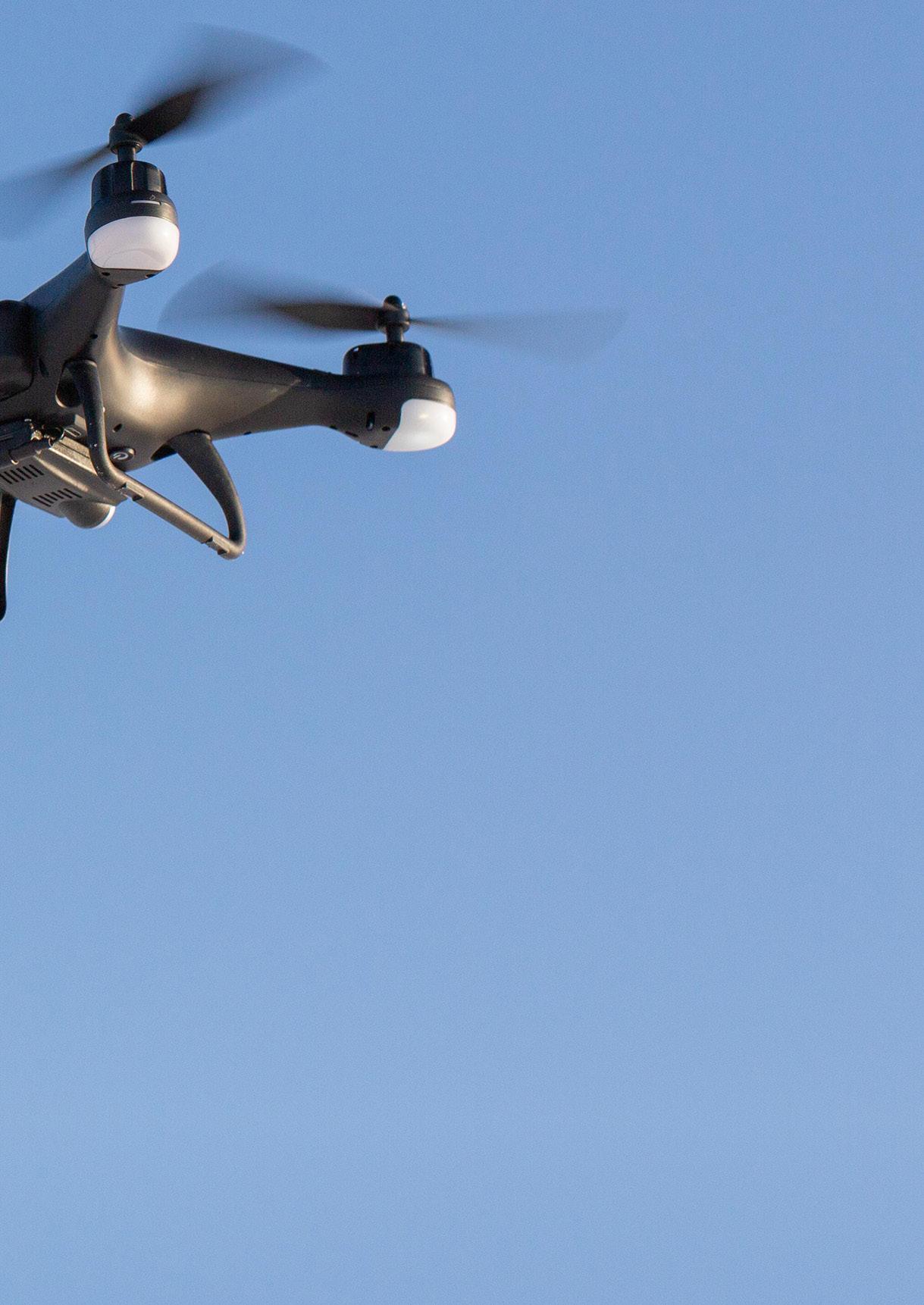
The technology behind and application of Unmanned Aerial Vehicles (UAVs), or drones, has continued to evolve.

here is an overwhelming demand from militaries all over the world that now consider drone capabilities a normal part of their war-fighting arsenal, with the US operating the world’s largest military big drone fleet, with over 13,000 UAVs, including the RQ-4 Global Hawk and MQ-1 Predator.
Drone use cases are not confined solely to military environments,
represented in the spike in growth within non-military uses, such as urban planning, logistics, agricultural monitoring, crop control, forest fire watch, and aerial photography. Imperial College recently developed a 'dual robot’ drone that can both fly through air and land on water to collect samples and monitor water quality.
Drones are also offering greater capabilities in policing, surveillance,
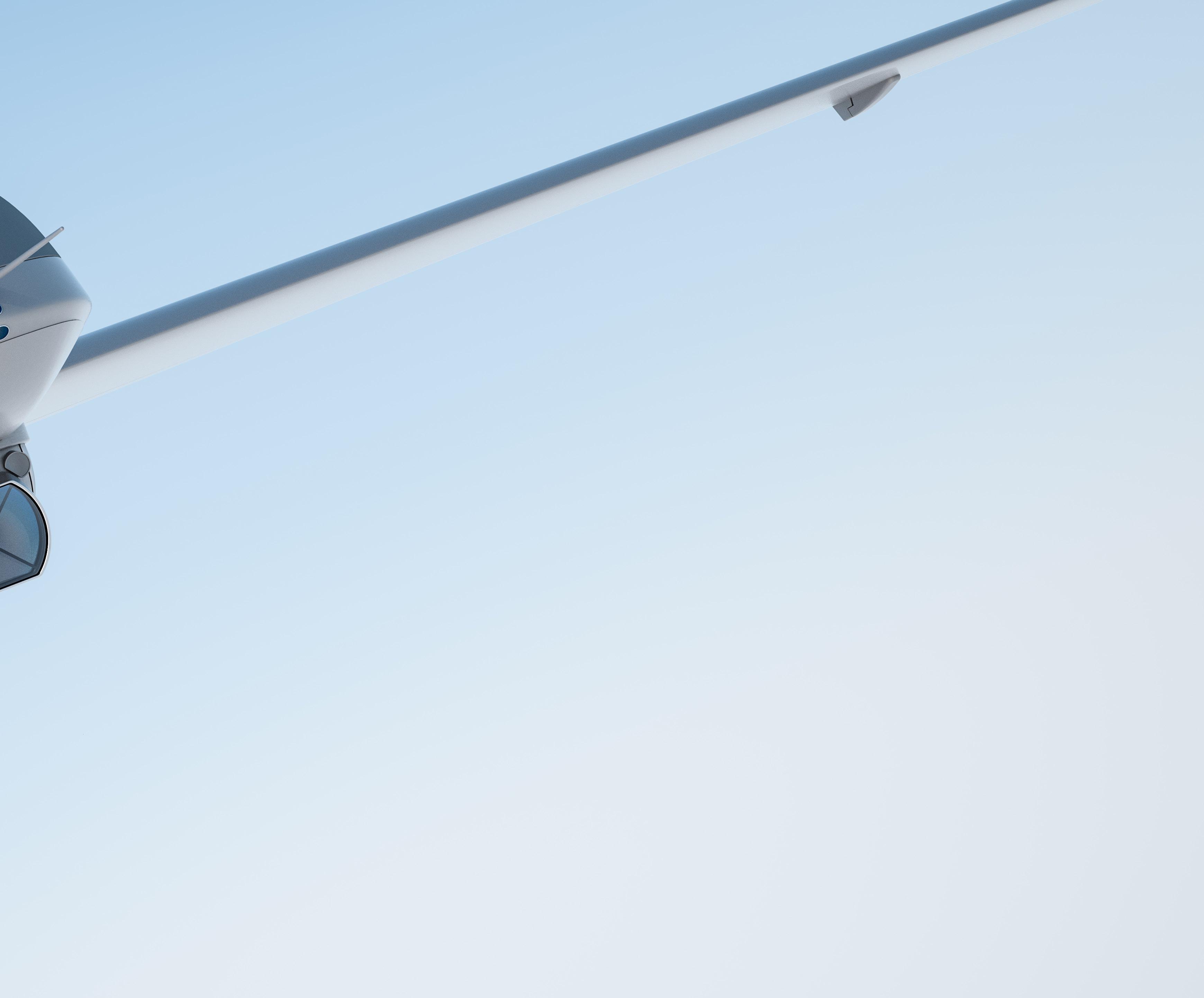
“These advances are not only expanding the range of drone use cases but also improving their utility in existing roles”
Will Ashford-Brown, Director of Strategic Insights at Heligan Group

the monitoring of national critical infrastructure and real-time situational awareness amongst large crowds – all functions that were largely unavailable to law enforcement, intelligence agencies and public safety bodies only a decade ago.
According to Will Ashford-Brown, Director of Strategic Insights at Heligan Group, advancements in sensor technology, robotics, accurate positioning systems and lighter, longer-lasting power systems have collectively contributed to a reduction in price and size of drones, whilst appetite for their use has grown significantly.


“These advances are not only expanding the range of drone use cases but also improving their utility in existing roles,” says Will. “Concurrently, we are experiencing a societal shift towards the acceptance of artificial intelligence, machine learning, and machine-driven decision support systems, as it becomes increasingly embedded in the technologies we rely on every day.
“As a result, drones have undergone a ‘mainstreaming’ effect in recent years, where they are no longer viewed by the general public as
futuristic, far-fetched toys, but rather another piece of practical technology we are integrating to improve efficiency, cost and speed in our daily lives. In this case, it’s less of a dramatic leap and more of an evolution in our technological development, which has been key for driving adoption.”
Whilst the mass adoption of drone technology has presented a multitude of benefits, it also poses growing security risks. Drones have notably disrupted commercial flight operations at some of the UK’s busiest airports, and sightings over
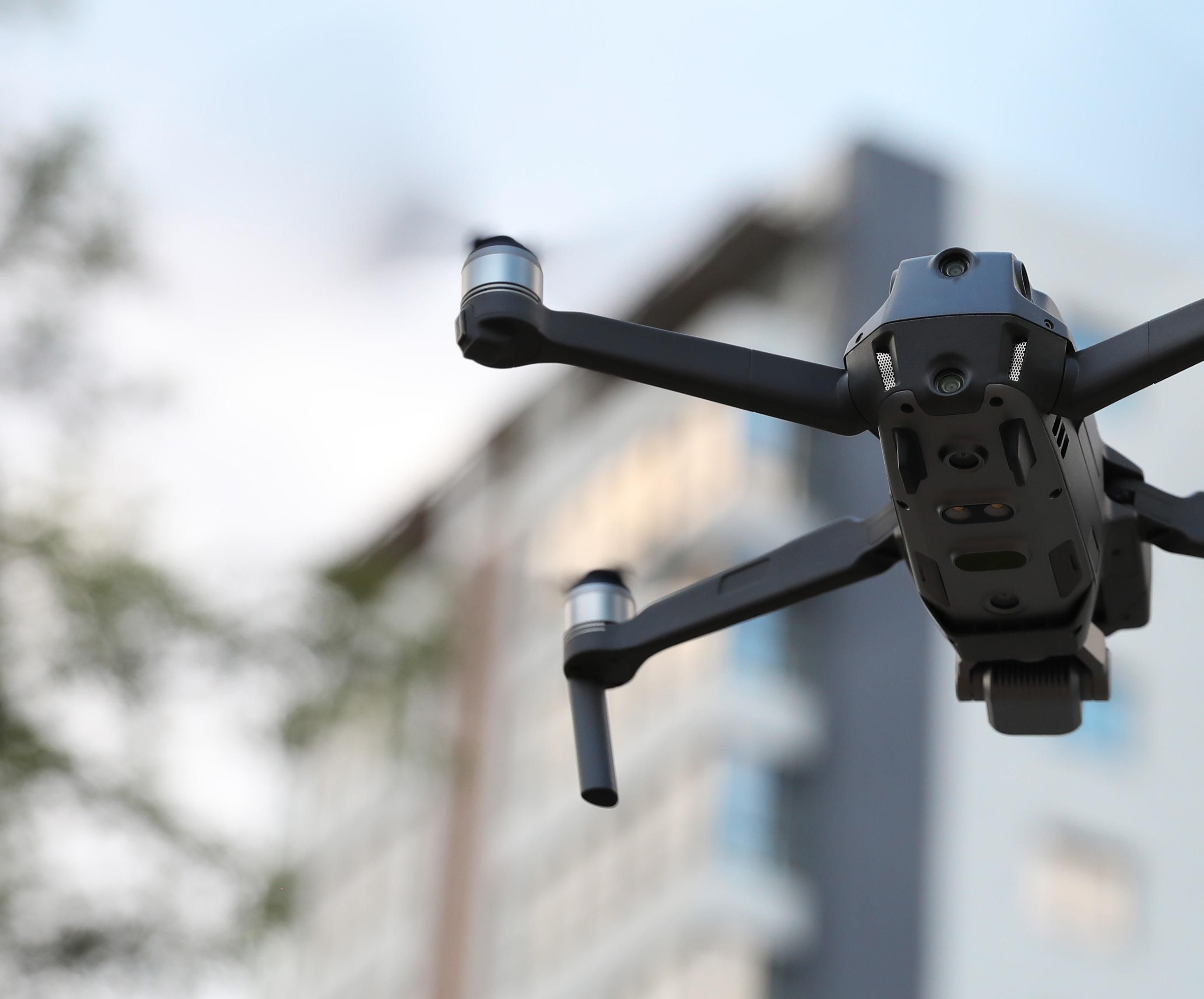
US airbases located in the UK have heightened concerns.
“Whether these disruptive activities are malicious or not, they’ve spiked an emergence of antidrone technology market activity,” continues Will. “These approaches range from kinetic, such as fired missiles, to high-energy laser weapons to electronic warfare jamming solutions. In response, we can expect to see further advances in drone capability, such as AI-assisted piloting, to bypass jamming, to counter this growing sector.
“As drone technology continues to evolve in a truly diverse marketplace, continuous adaptation and tech advancement will be essential to manage disruptive applications”
Will Ashford-Brown, Director of Strategic Insights at Heligan Group
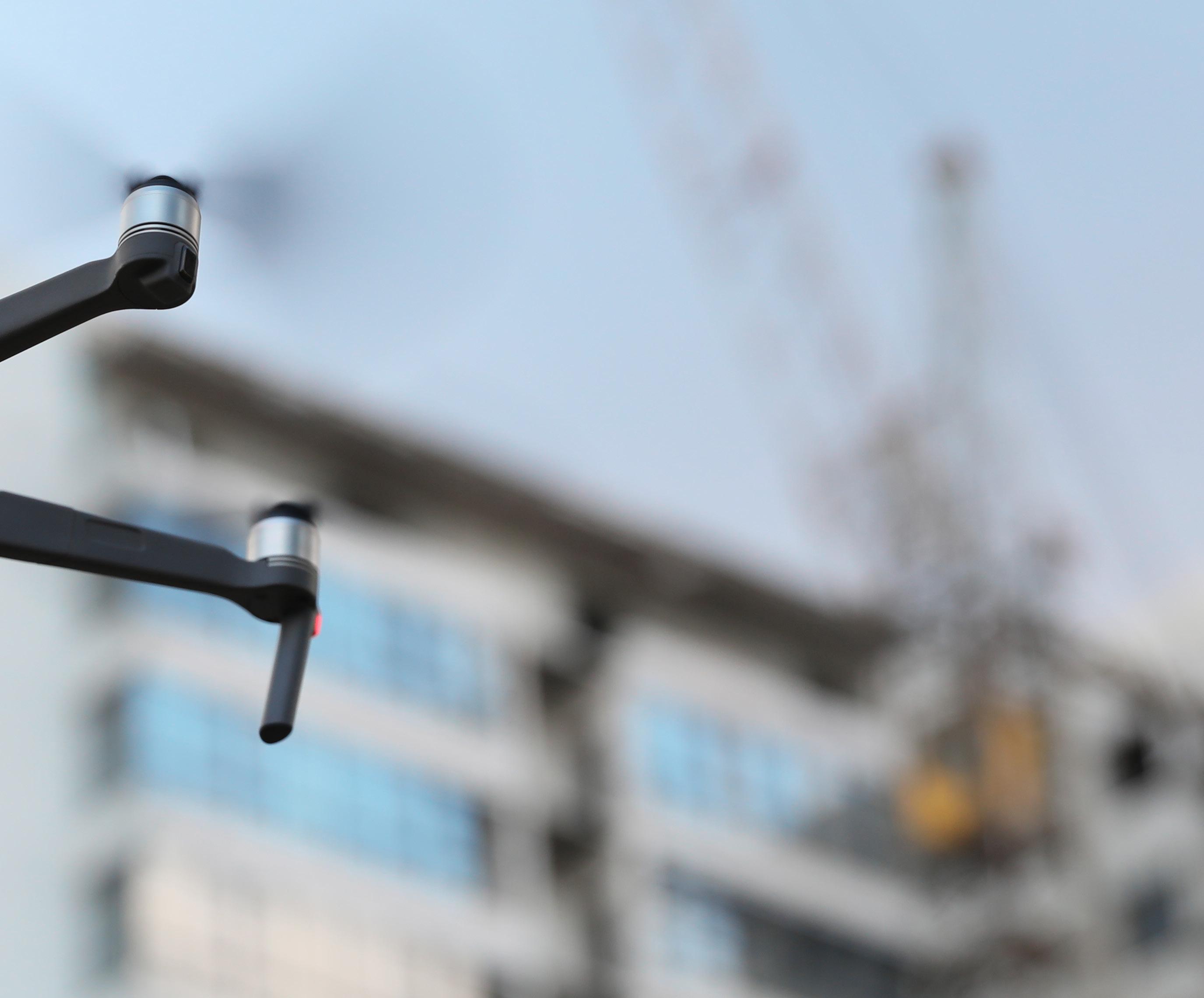

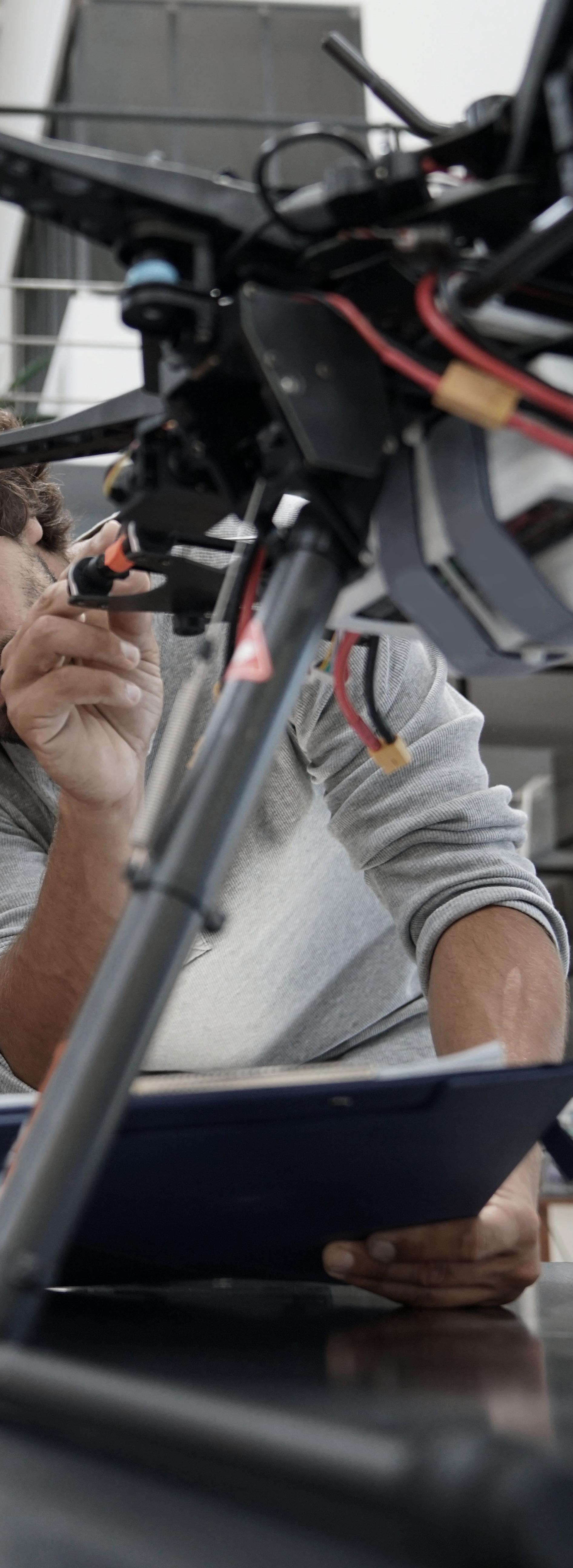
“In terms of market opportunity, power consumption has become the primary limiting factor for drones as battery tech has proved slow to improve. As such, wireless charging and power transfer for drones represent a critical growth area in the coming years. Light detection and ranging (LiDAR), also holds investment potential, as it addresses the value in autonomous navigation and modelling of complex environments like cities. Although currently too expensive, bulky and heavy for small to mediumsized drones, breakthroughs in more compact, lightweight LiDARs would be transformational in facilitating growth from an investment perspective.
“As drone technology continues to evolve in a truly diverse marketplace, continuous adaptation and tech advancement will be essential to manage disruptive applications, address the need for autonomous navigation and mapping of complex environments and counter anti-drone technology. The potential for improvements in wireless charging, power transfer and LiDAR will undoubtedly trigger a surge in investment activity in the coming years, depending on how effectively opportunities and risks are navigated,” concludes Will.
Source: Heligan Group





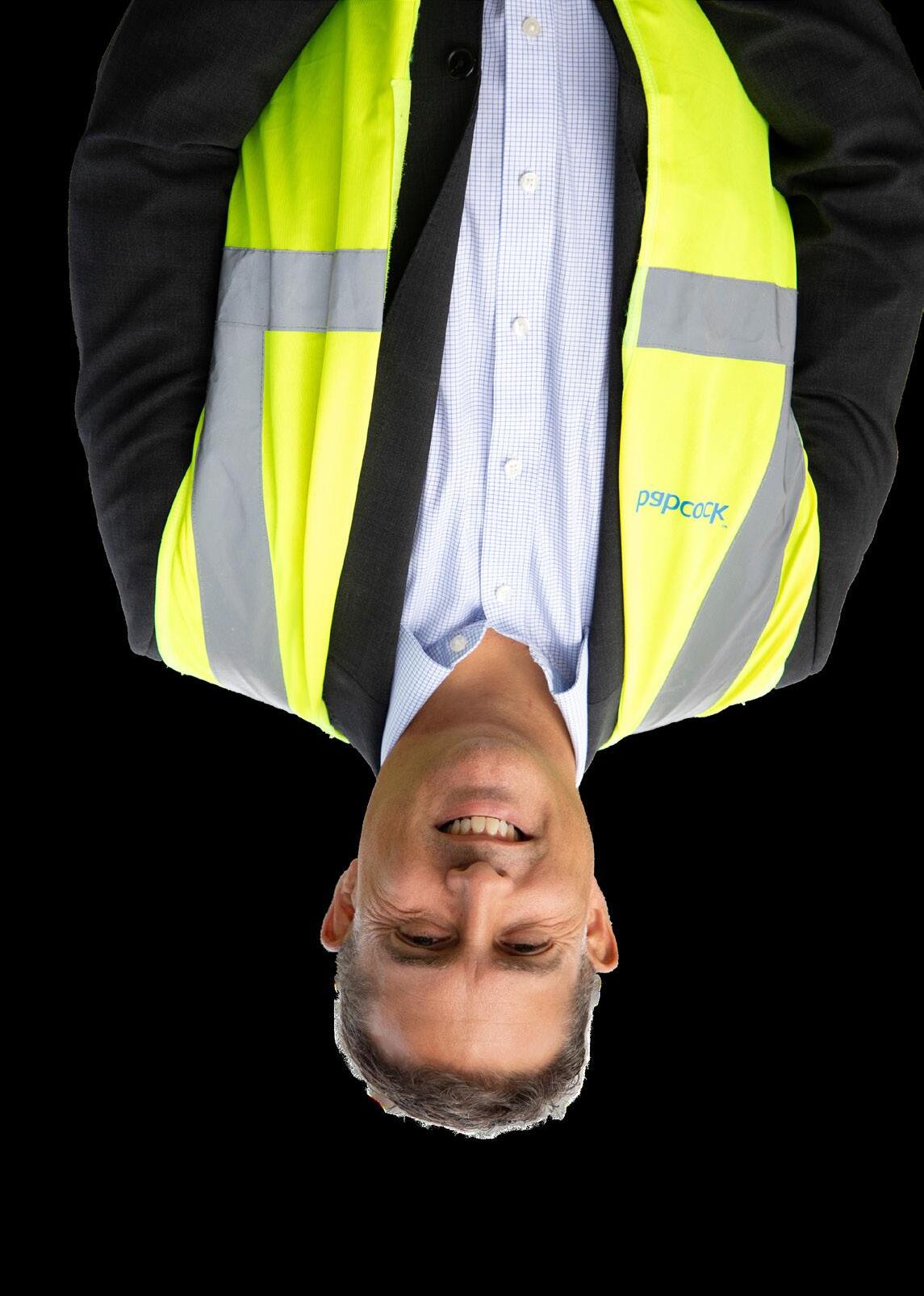


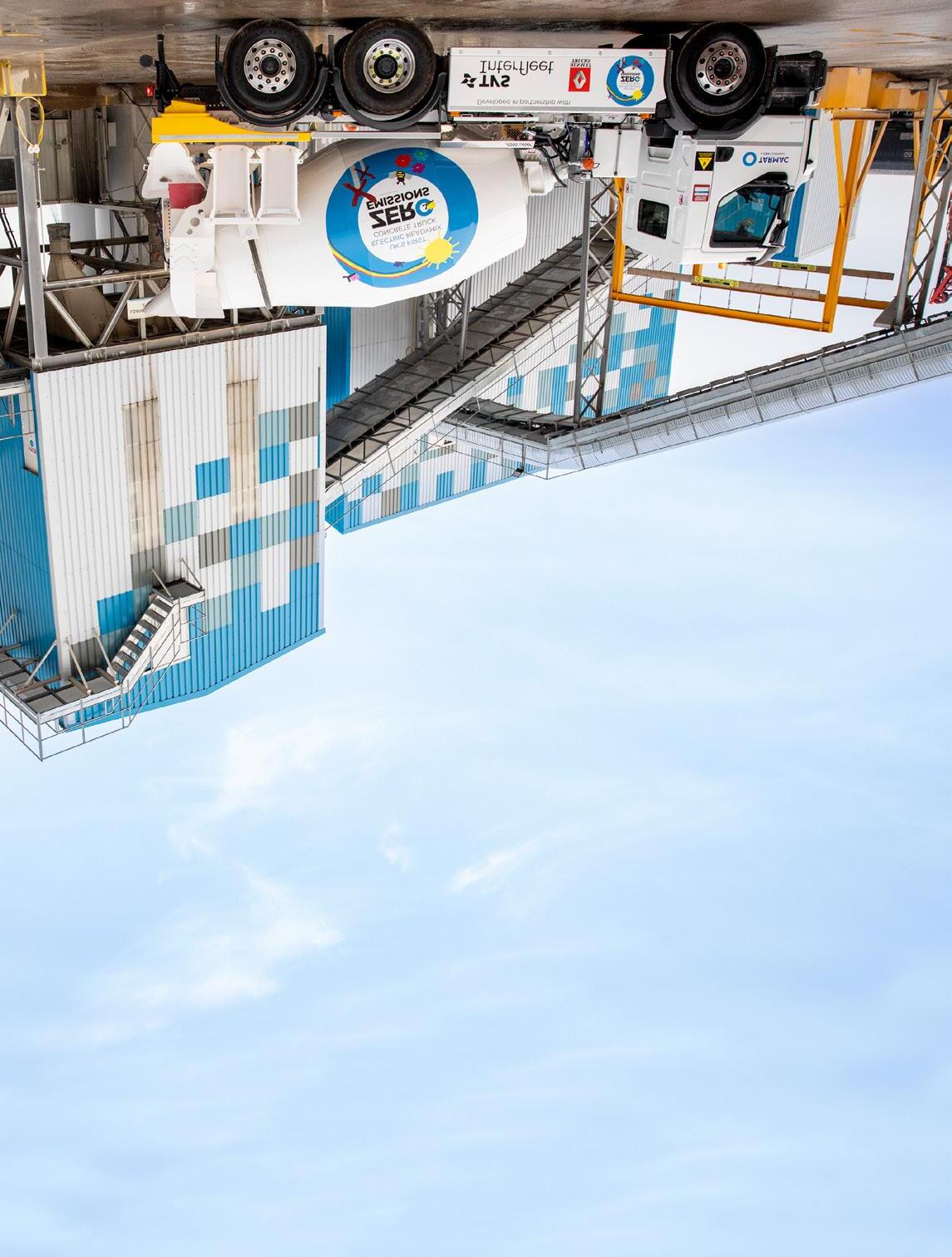




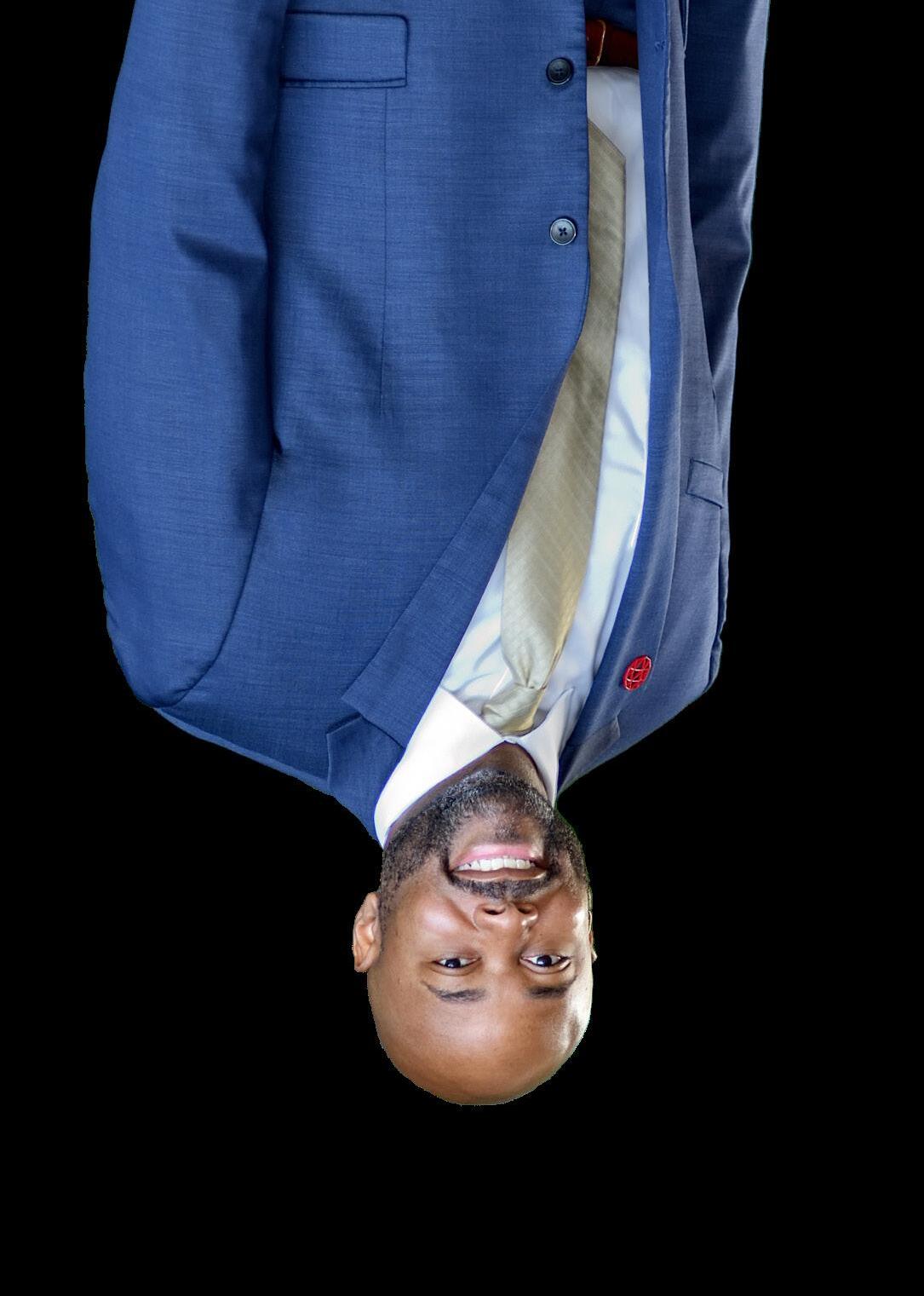














There’s a new digital divide in town and Gen Z are the ones holding the crowbar.


It used to be enough to just go digital. Now, it’s the bare minimum.
new digital expectations gap is opening up – one that separates what consumers want from their online experiences and what brands are actually delivering. And no demographic has done more to expose this gap than Gen Z.
As the first fully digital-native generation, they’re no longer content with the half-hearted mobile interfaces or generic brand messages that defined the early days of digital transformation. They want immediacy, intuition and individuality in every interaction. And when they don’t get it, they’re not afraid to move on.
According to Adrian Bryers, Lead Strategist at Great State, for brands, the warning is clear: “Lose pace with
Gen Z’s high standards and watch your relevance vanish.”
True children of the internet
Born between 1997 and 2011, Gen Z have never known a world without smartphones, social media or instant access to information. Because of that, this always-on, mobile-first generation has set new benchmarks for what ‘good’ looks like online. They don’t just crave, but expect real-time customer service, intuitive interfaces and digital journeys that reflect their identity and values –and they expect it from everyone, whether it’s where they buy their cars, their insurance or even their socks.
If a brand fails to please them, they’re gone. In fact, Great State’s
Shifting States report reveals that nearly half (47%) of Gen Z consumers in the UK have disengaged from brands that failed to meet their digital expectations, while over half (55%) say they wouldn’t return to a service that disappoints them online.
They’re an emerging generation accounting for 40% of global consumers, so the stakes couldn’t be higher.
“They’re looking for authenticity and trust from any brand they engage with. At a time where authenticity
take the time to focus on authenticity stand to differentiate themselves further,” says Adrian.
An analysis of the top and bottom 50 brands in the annual UKCSI index consistently shows that those delivering authentic experiences and Gen Z-focused features tend to rank higher.
“The disconnect between Gen Z and brands is most stark when digital experiences rely on a ‘one-size-fits-


“If you have a generation that’s thinking differently, your organisation should think differently too. Disrupt and reset. Otherwise a new brand will come in and take over”
Adrian Bryers, Lead Strategist at Great State

same content, tone or journey across every channel,” elaborates Adrian. “This generation expects to be understood on a much deeper level, with experiences that meet their specific expectations. Anything less suggests brands haven't done the work to earn their attention, let alone loyalty.”
The big utility companies and telcos are good examples of this, either missing the mark through a lack of insight or being renowned for not caring enough to understand their customer needs. Whereas in contrast, smaller telcos are outperforming their larger counterparts, featuring in top 50 lists of overall customer satisfaction.
While a shoddy delivery or customer service experience was excusable in previous generations – the expectations of more than ‘brilliant basics’ is clear with this group, who expect progressive new players to enter the ring. And Gen Z is comfortable with this – happily hopping from one to the other, while Gen X sticks with a bank for life.
We also see how larger organisations that have implemented highly automated, ill-considered customer service models without consideration of their customers, Gen Z or otherwise, are also falling short.
Across the board, there are many examples of brands struggling to

resonate with Gen Z and it’s not always because they’re unaware of their needs.
“Navigating change with complex legacy systems isn’t for the fainthearted,” says Adrian. “It requires a fundamental shift in mindset. If you have a generation that’s thinking differently, your organisation should think differently too. Disrupt and reset. Otherwise a new brand will come in and take over.”
For those serious about creating engaging and fulfilling experiences for their future consumers – or even recruits

– they need to understand their needs through continuous discovery and then optimise their digital touchpoints to create the authentic experiences they crave.
Sectors who have previously relied on older, wealthier customers also must think about how to create new services and products that will captivate, engage and inspire the next generation. This process often creates friction as a new set of desires for any new customer group is often not compatible with legacy business offerings.
Thankfully there are some examples of brands that have been willing, and able, to close the expectation gap. Some of the newer Fintech brands – Monzo and Starling for example –have both pushed disruption in the banking sector, while serving the needs of their Gen Z customers in a way they enjoy.
Giff Gaff has opted for a community operating model that builds customer loyalty and benefits, while also crowdsourcing new customers,


that fits the style of engagement that Gen Z is looking for.
While these brands are rising to the occasion, for those brands still playing catch-up, now is the time to act. If you’re in the latter camp, Adrian offers a few guiding principles to help hit the Gen Z spot:
• Brands should invest in ways to listen and truly learn from Gen Z, reflecting their needs into the ongoing strategy and out into the business, across channels and services.
• Design upwards. This means taking time to consider how your experience fits, from the ground up rather than dropping new things on the top, which may create problems at the bottom.
• Build transparency into how your digital experience is enabled. We know that privacy and trust are the currency of authenticity. So over-data harvesting and obscured permissions will not win you fans from Gen Z customers who realise the value of their data.
“While no one truly knows where technology will take us, we do know that the world has moved on quickly, and will continue to do so,” summarises Adrian.
“With this in mind, the opportunity here isn’t just to catch up: it’s to reimagine what digital can be, through the lens of the most demanding and digitally literate consumers yet.”
Source: Great State
Stay















Innovation Magazine is a specialist technology platform with over 166,700+ readers.
Our community consists of C, V and D level executives from a wide range of industries. A unique blend of thought leadership interviews and features that cover digital transformation, cloud & cyber, enterprise IT, artificial intelligence, machine learning and sustainability.




Demand



Webinars - Hosting & Promotion



Team up with Innovation Magazine and build media programs that deliver.
Find out more

How HR tech platform Skillvue is evolving into a comprehensive skills partner.
As 70% of HR professionals struggle to find skilled workers, Skillvue’s AI-powered system breaks down traditional job structures, revealing true capabilities and boosting performance.
With 59% of workers needing reskilling by 2030, the platform

addresses a critical need in workforce management.
Last month, Skillvue announced a $6.3m funding round to transform how companies identify, measure, and develop skills across both candidates and employees.
As the job market faces unprecedented disruption, Skillvue’s AI-powered platform is evolving from a recruitment tool into a comprehensive Skills Assessment Agents system that breaks down traditional job structures to reveal the capabilities and potential that truly drive performance.
“We’re harnessing the power of AI to put skills at the heart of workforce performance, transforming how companies identify, hire and grow talent,” says Nicolò Mazzocchi, CEO and co-founder of Skillvue. “Our technology drives faster, more informed recruitment, smarter talent management and real scalability across HR processes. With this new round of funding, we’re hitting the

accelerator to keep building our Skill Assessment Agents, able to ensure that everyone’s capabilities are visible, valued, and fully unlocked while simultaneously granting a smooth assessment experience both for HR and for final users.”
The AI Agents that power Skillvue’s platform are continuously evolving, not only to improve assessment accuracy but also to enhance the user experience during the assessment process.
The company is making significant advancements in its technology, with a focus on evaluating skills with high precision and providing a seamless, engaging interaction for candidates and employees alike.

What’s next Skillvue aims to expand internationally and enhance its platform to meet the growing demand for skills-based talent management.
Learn more at skillvue.ai.
